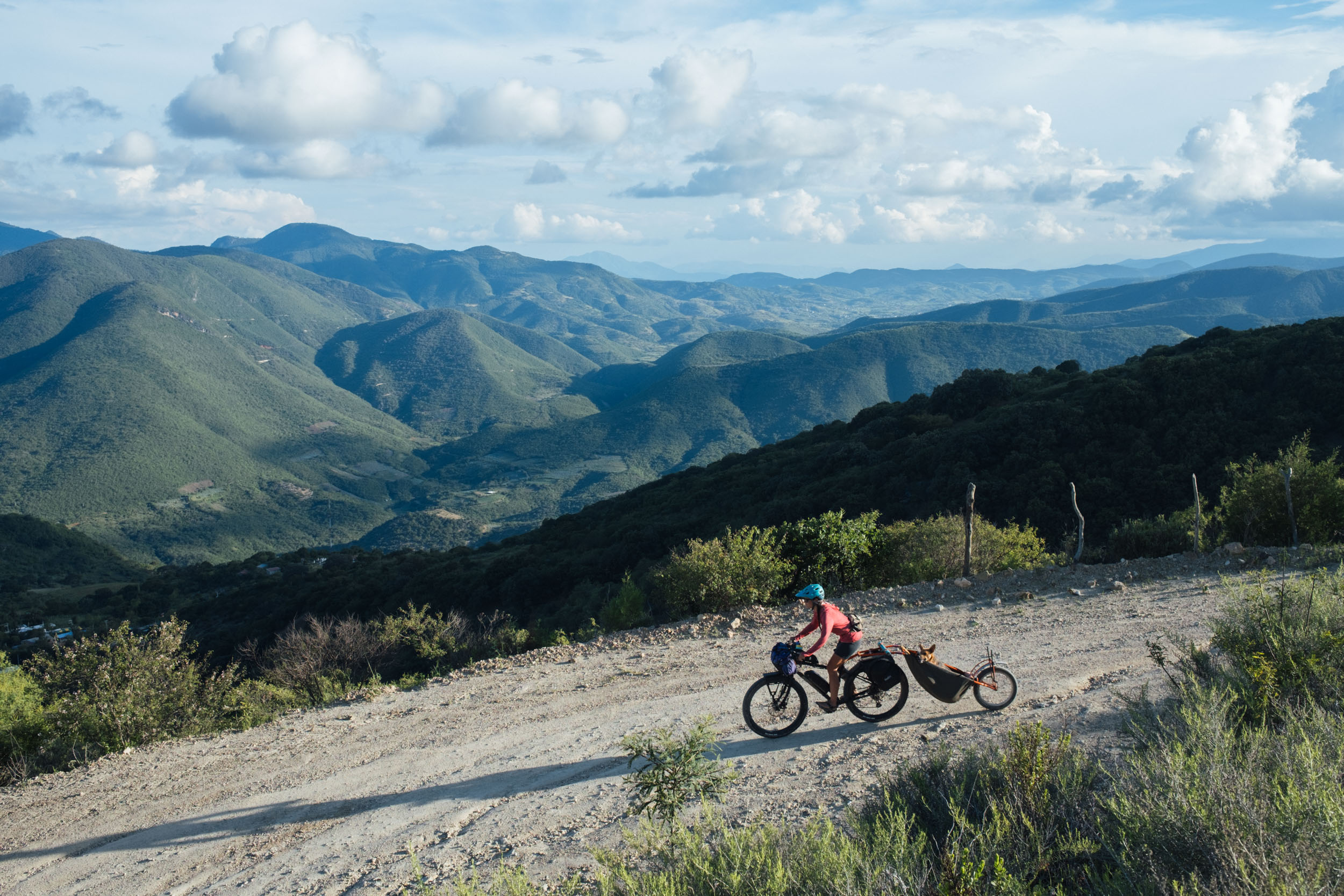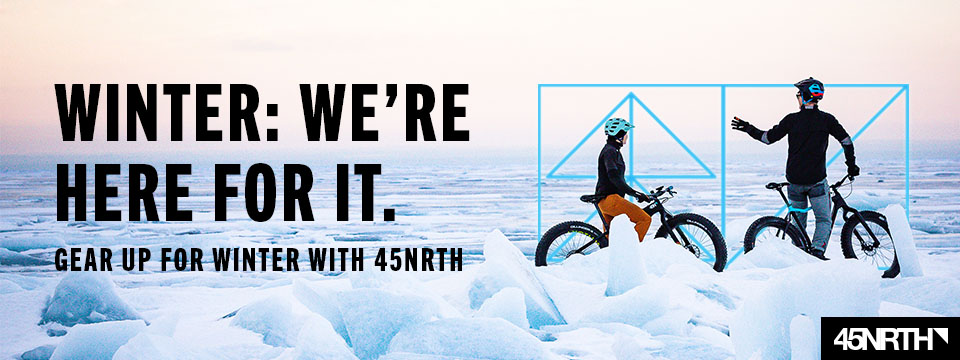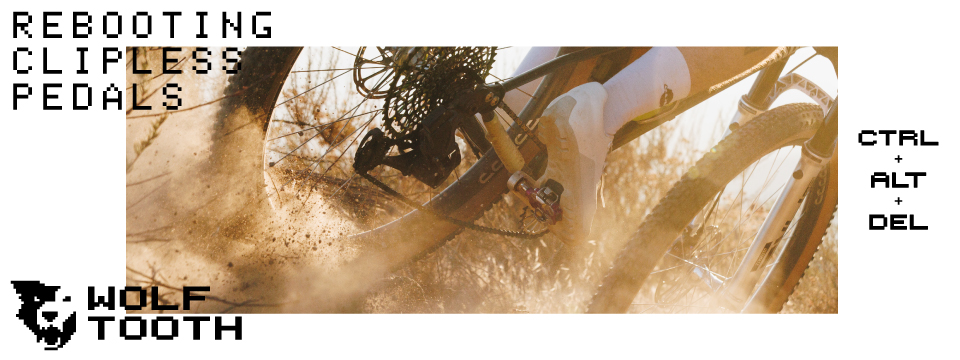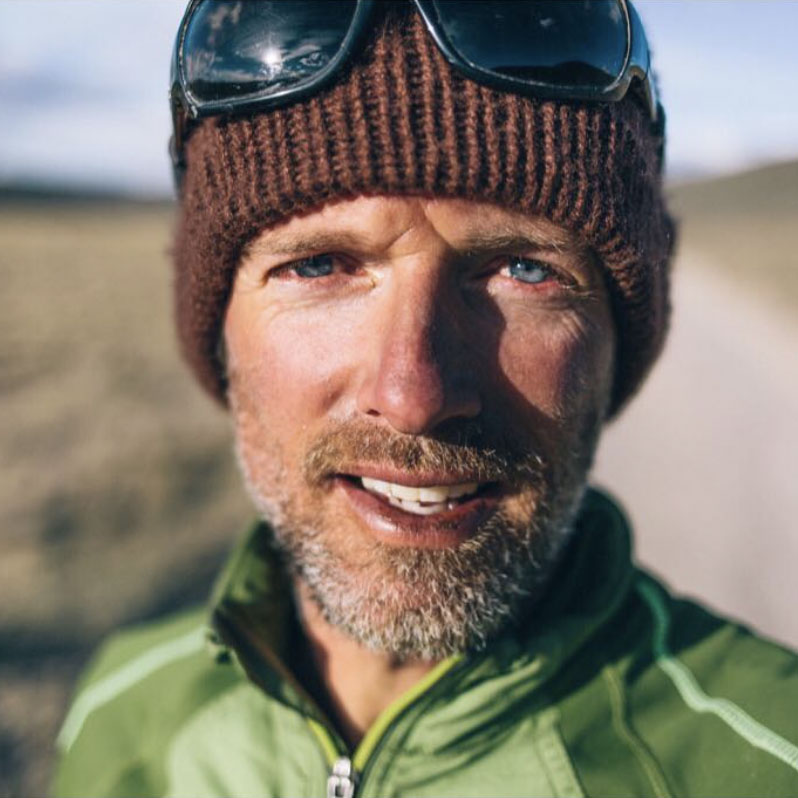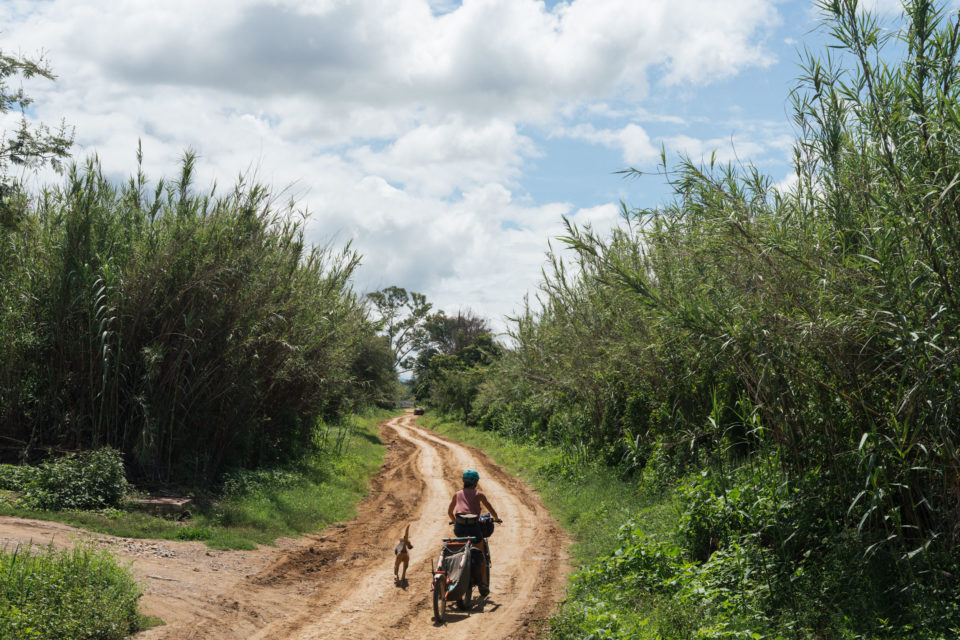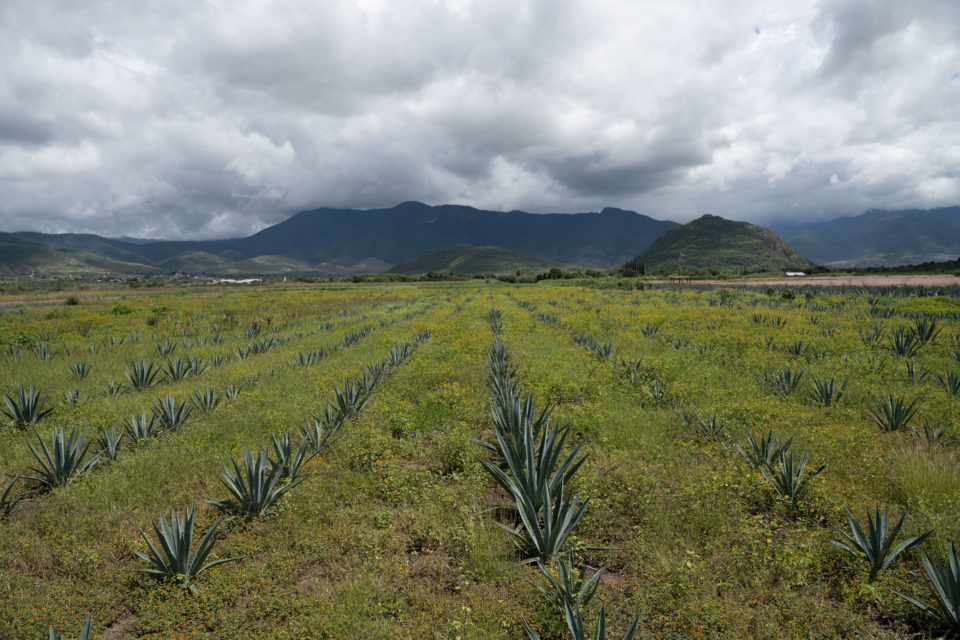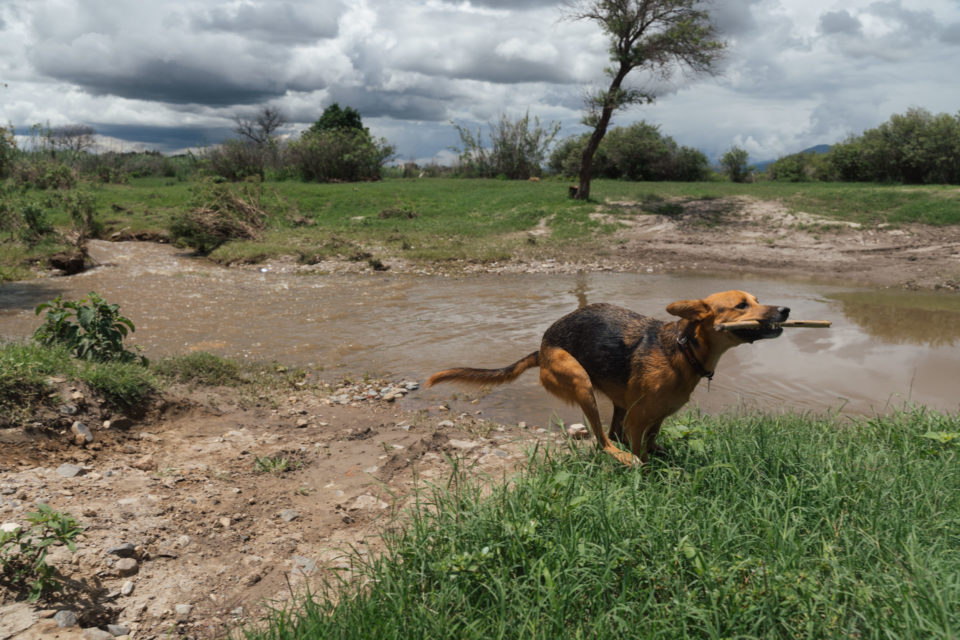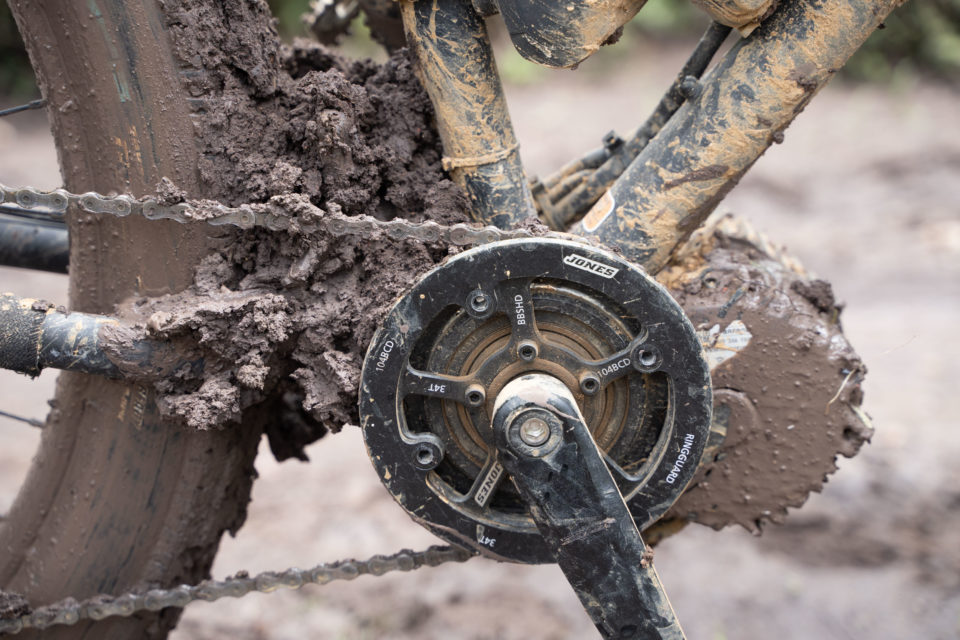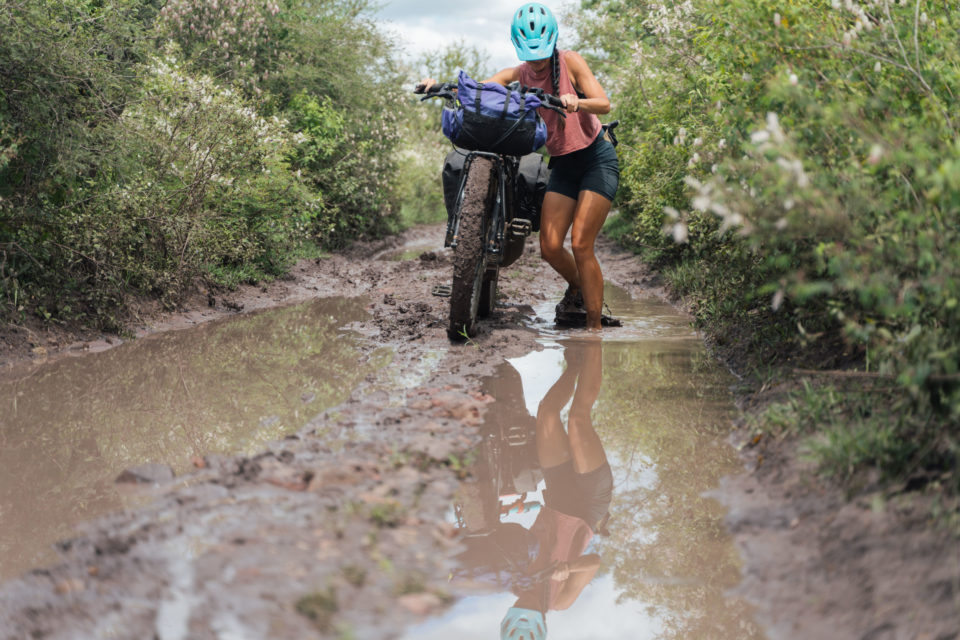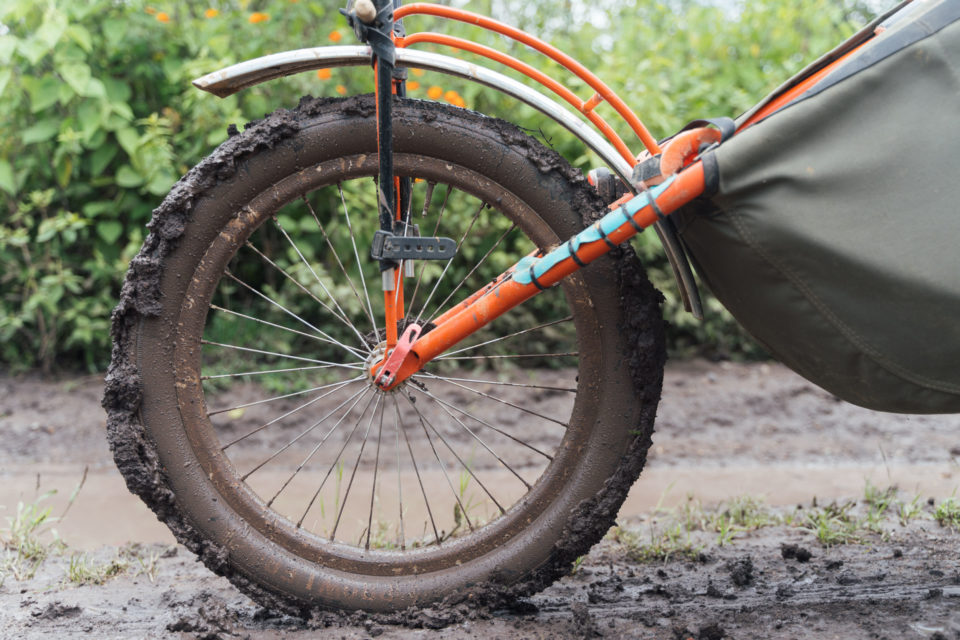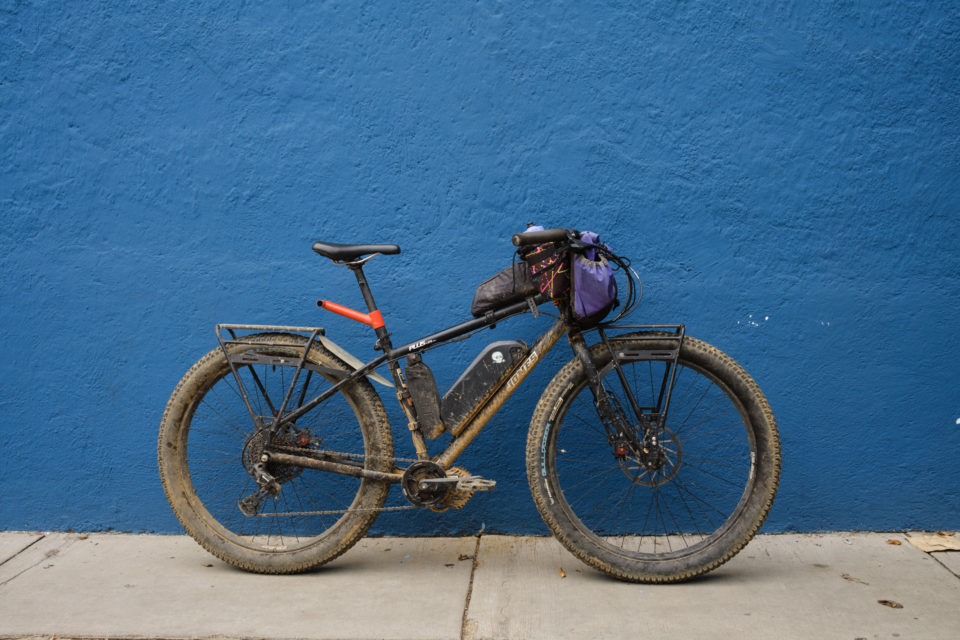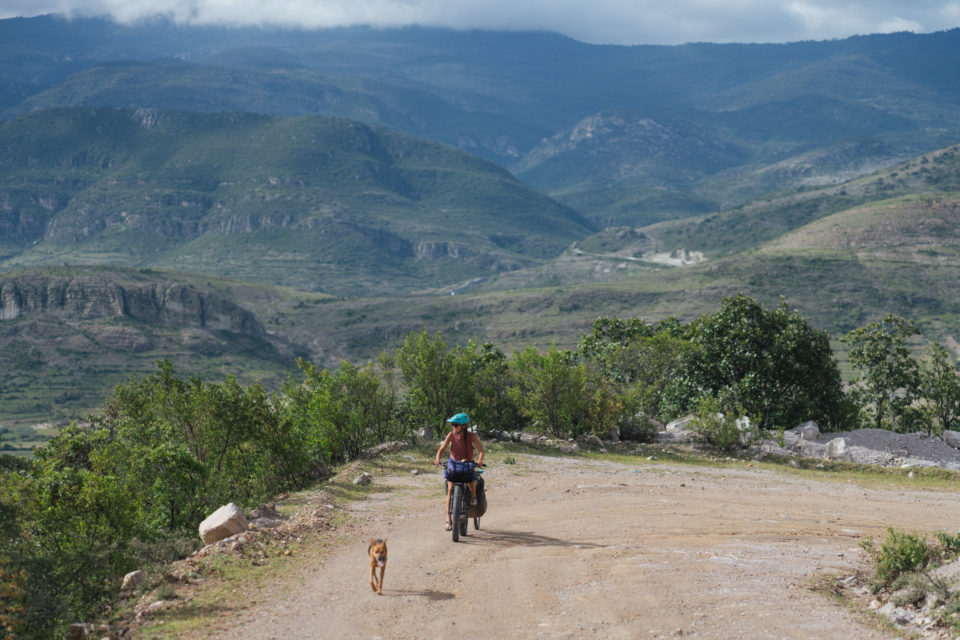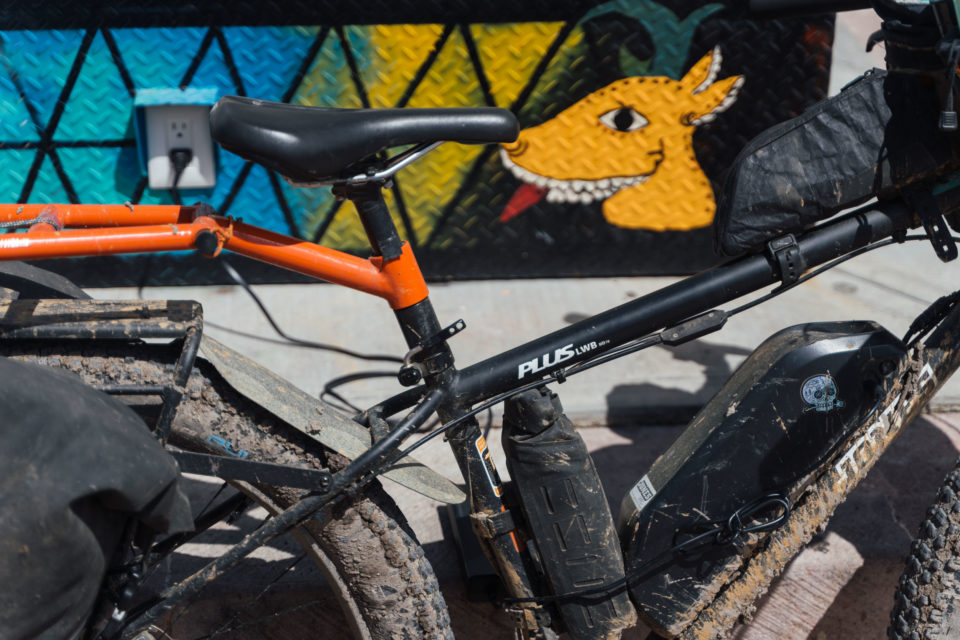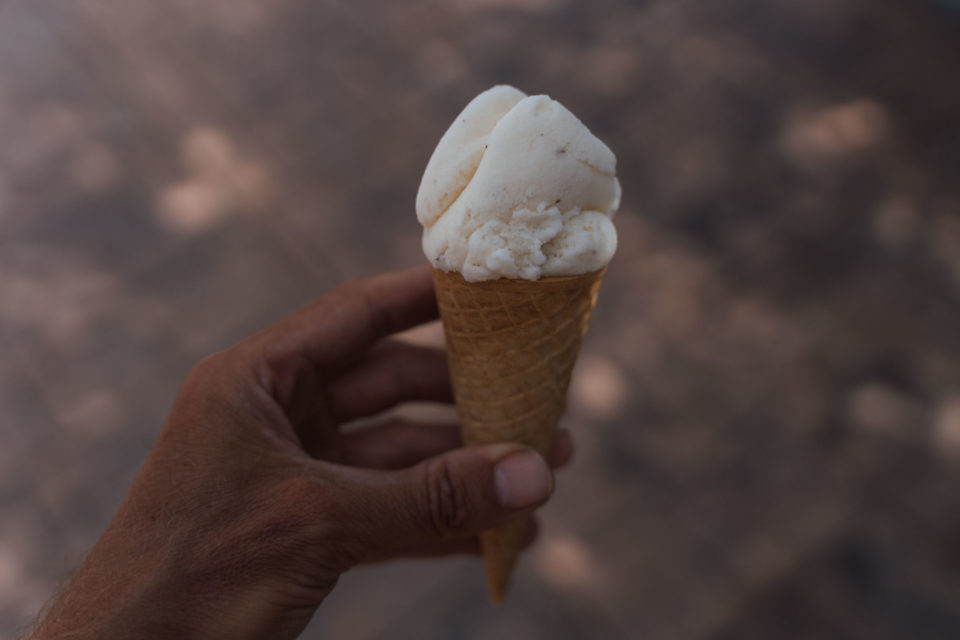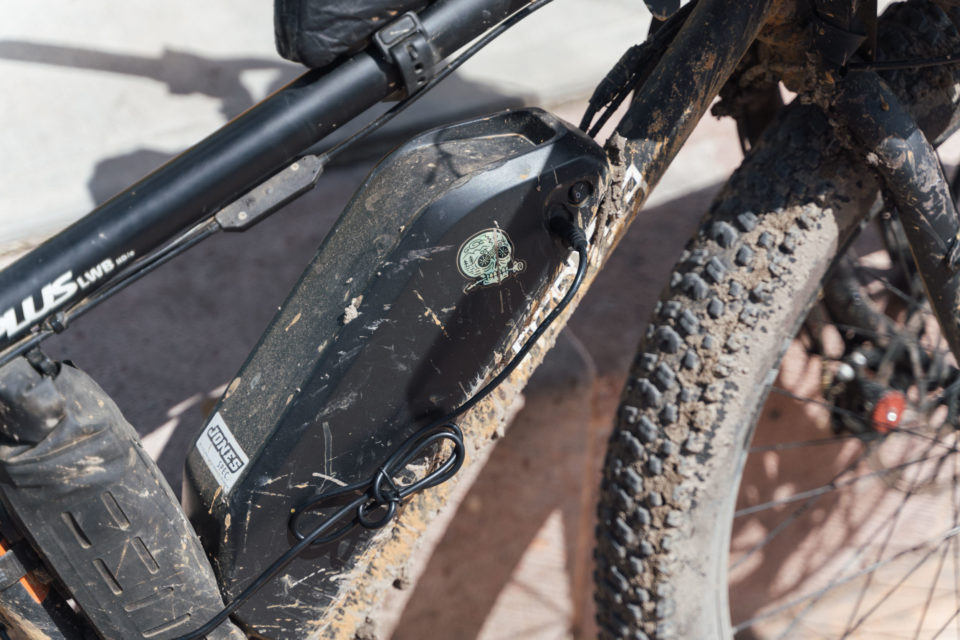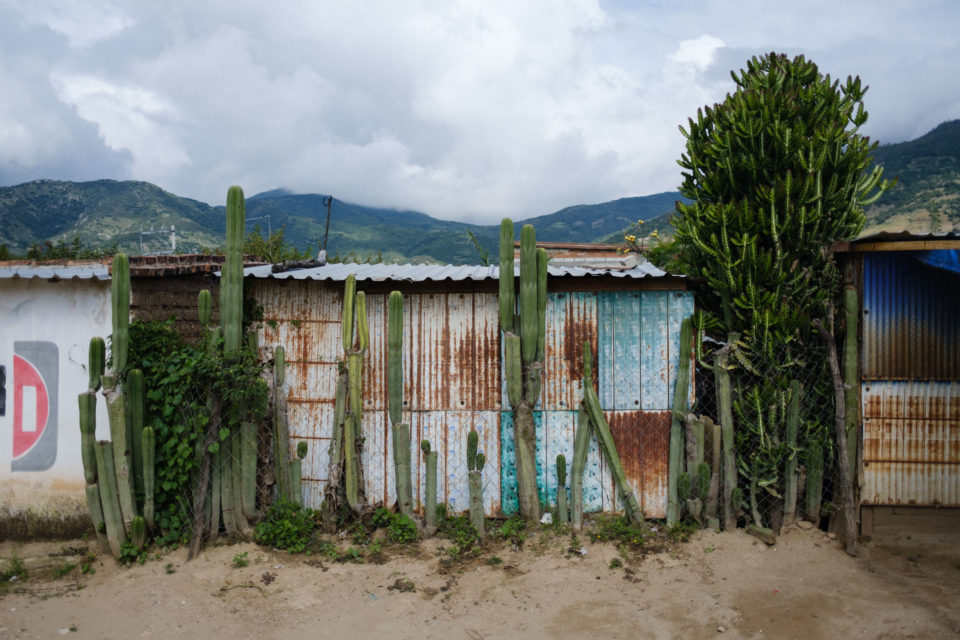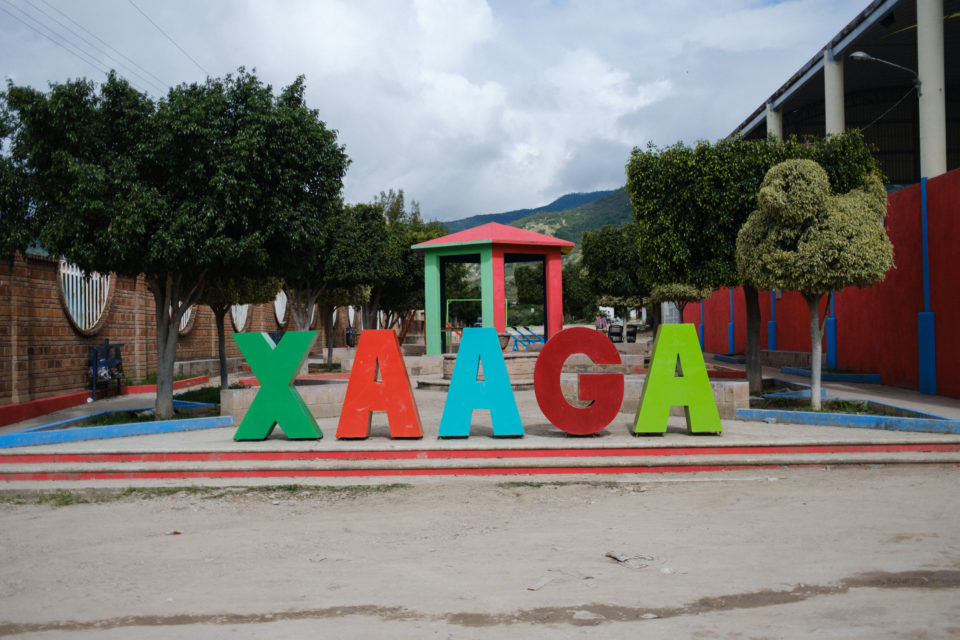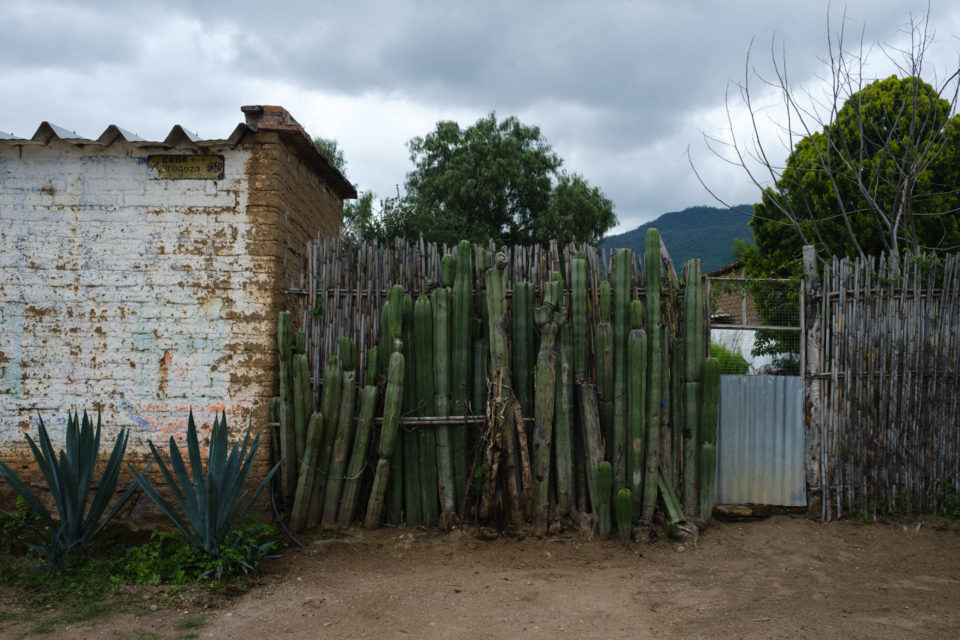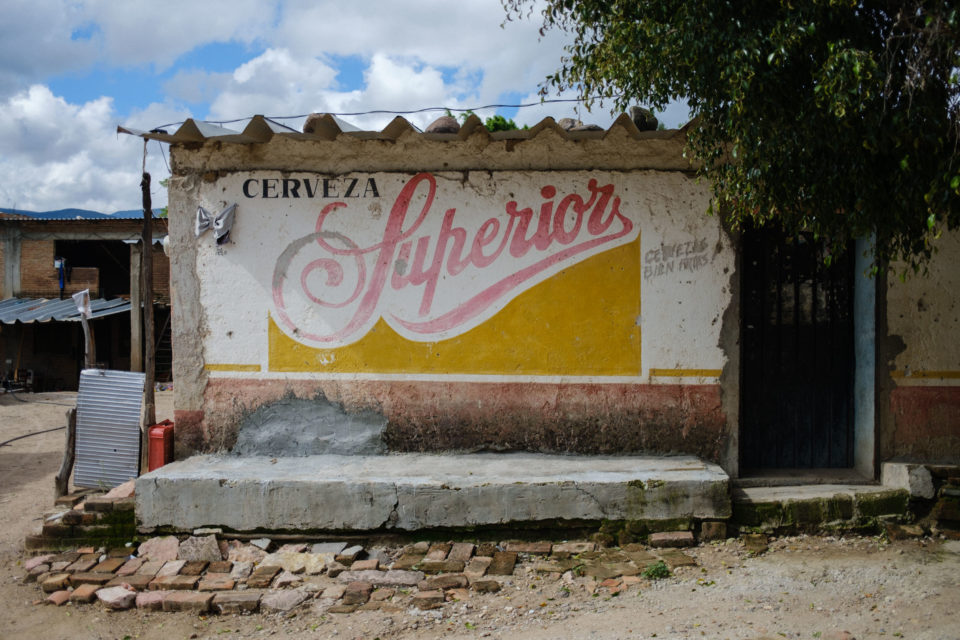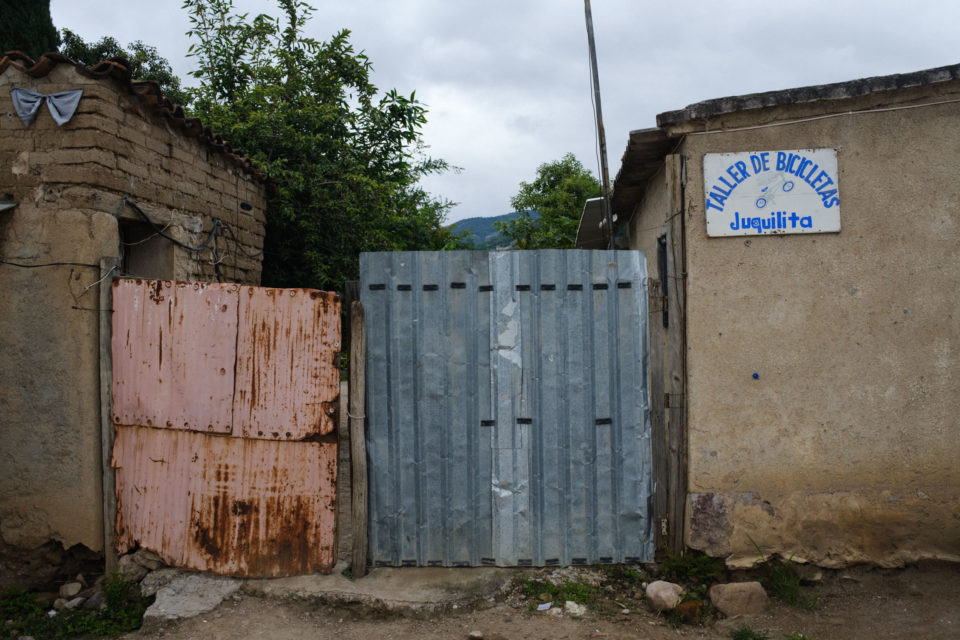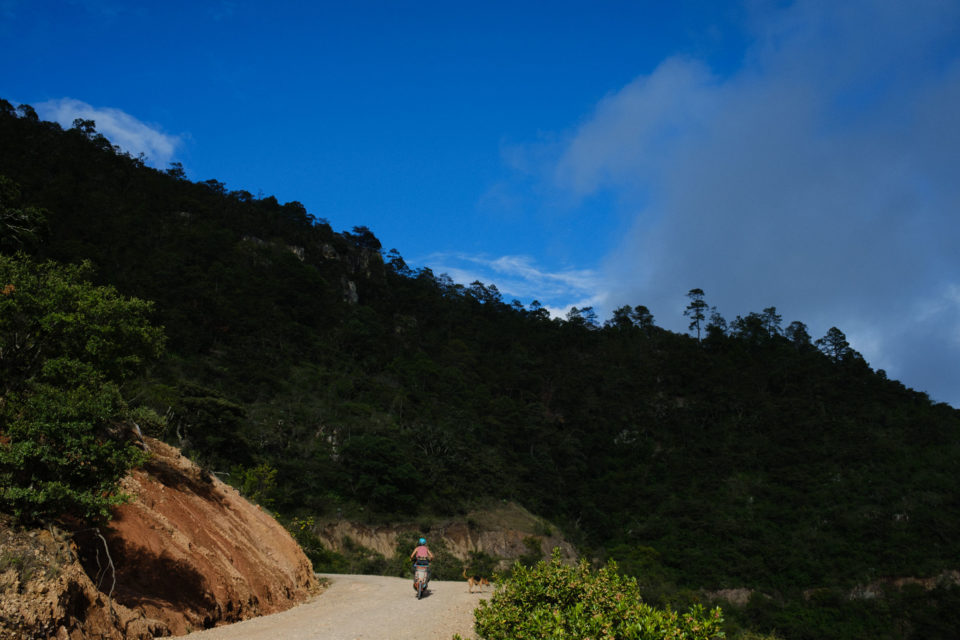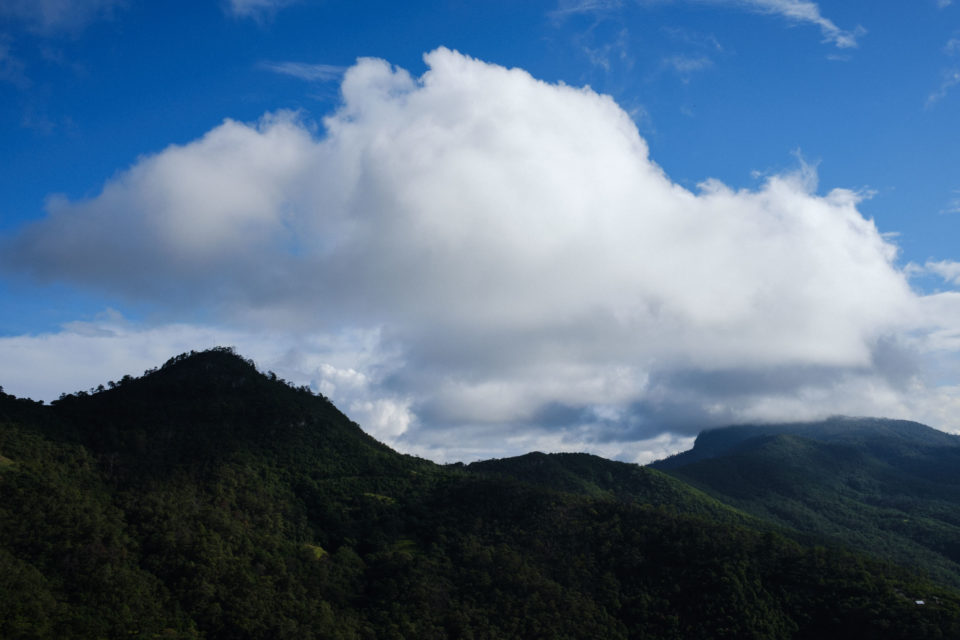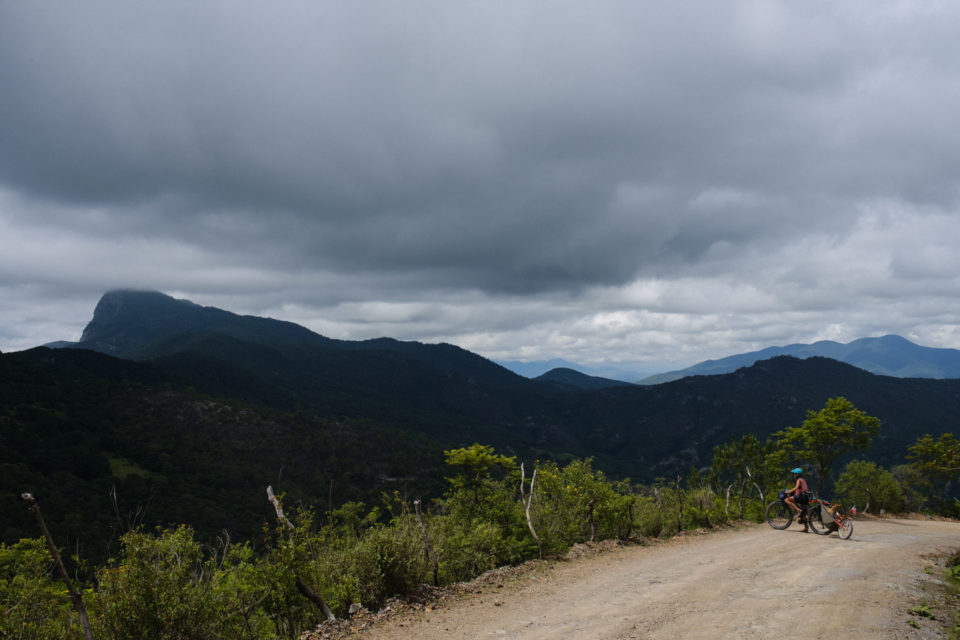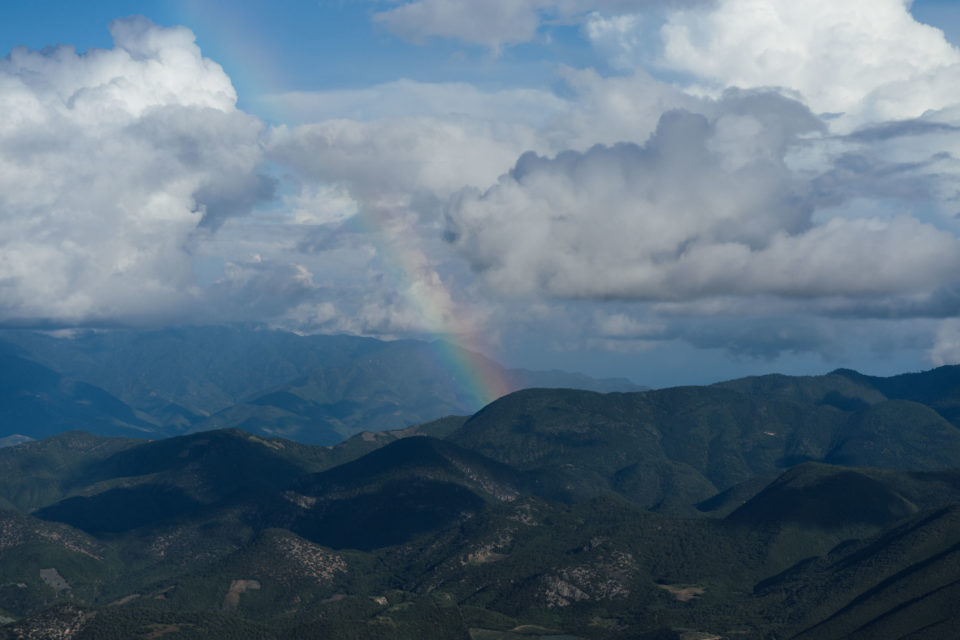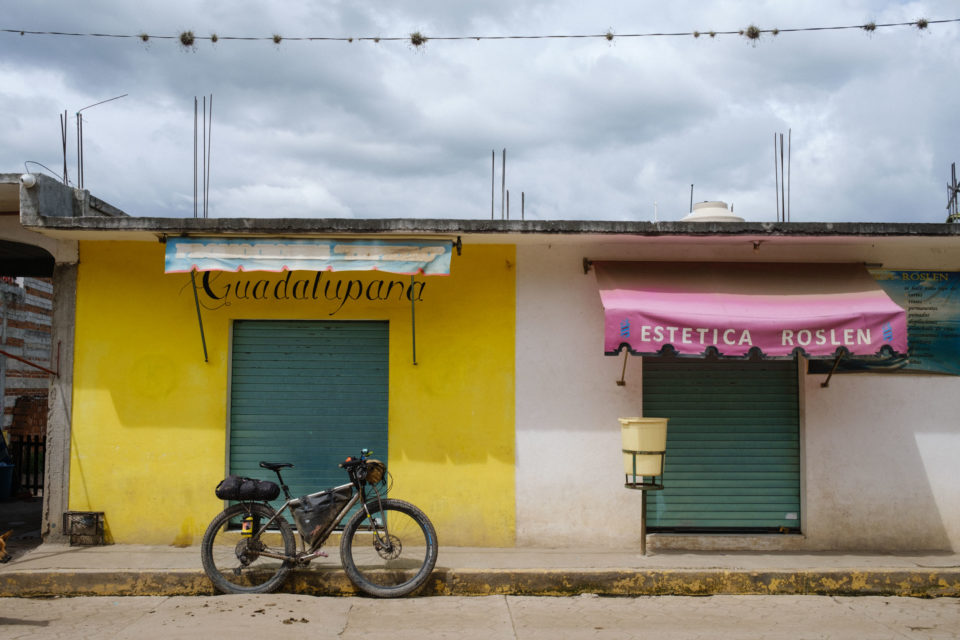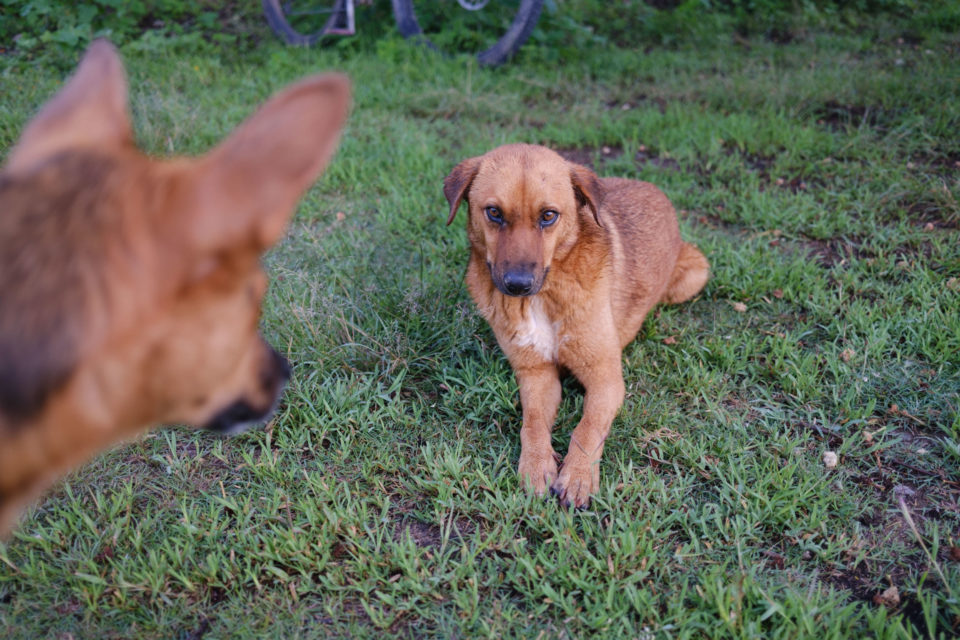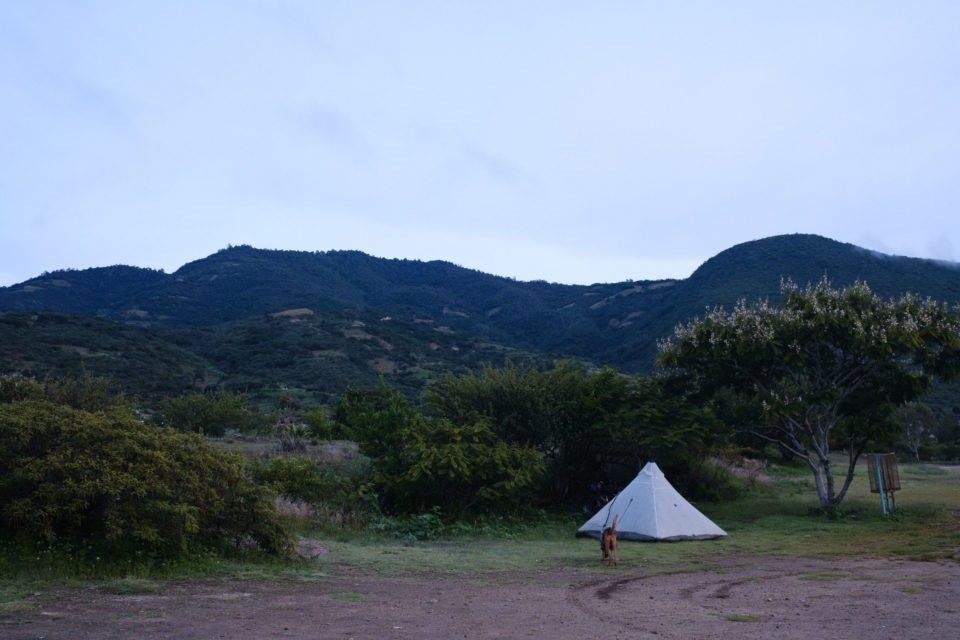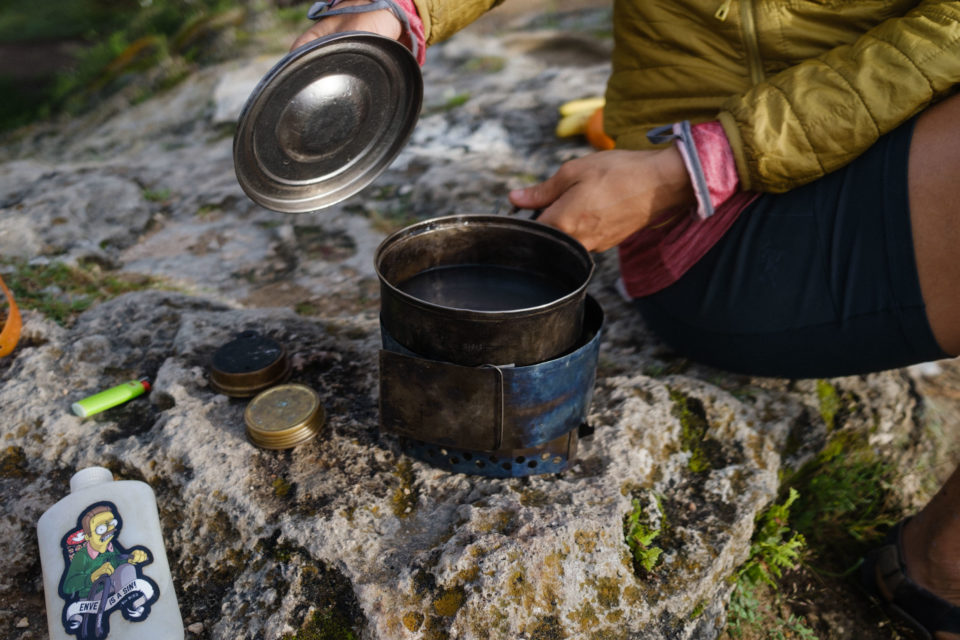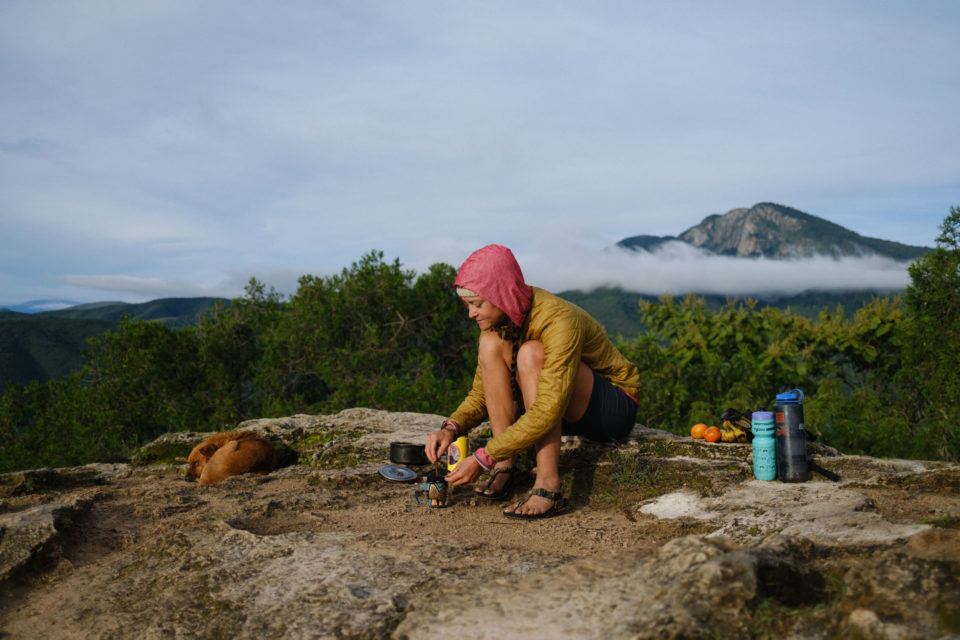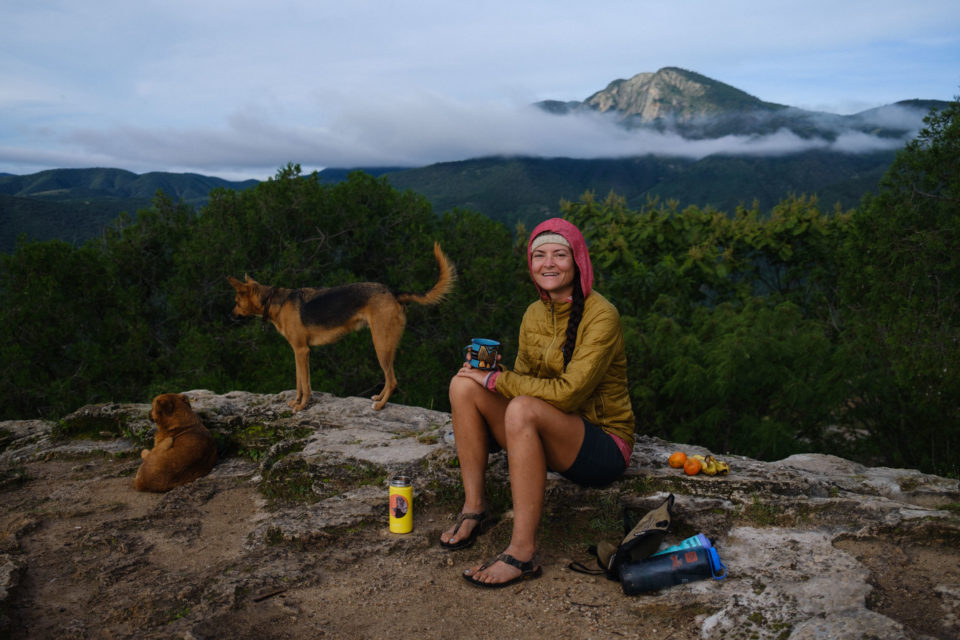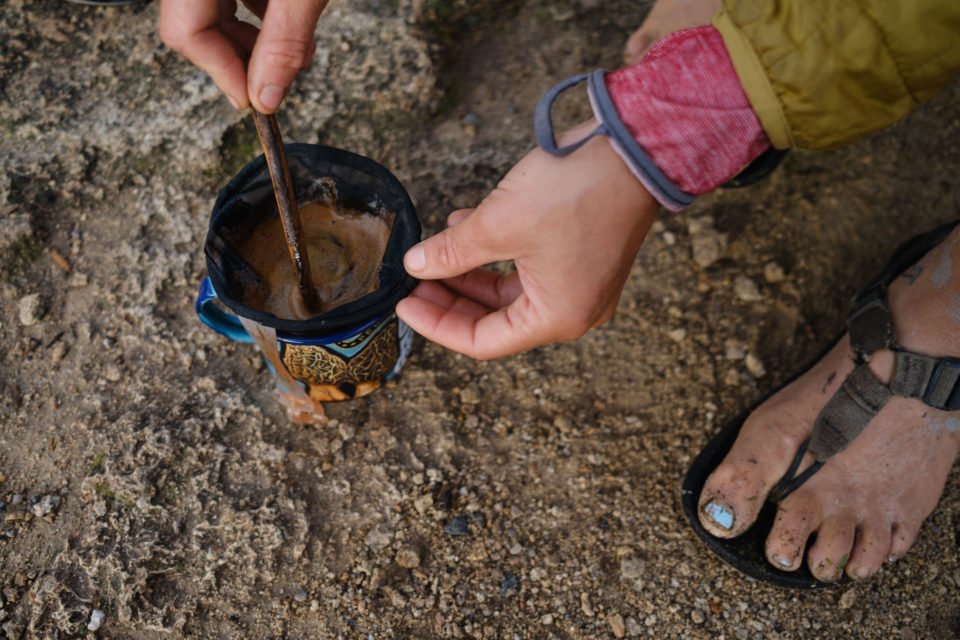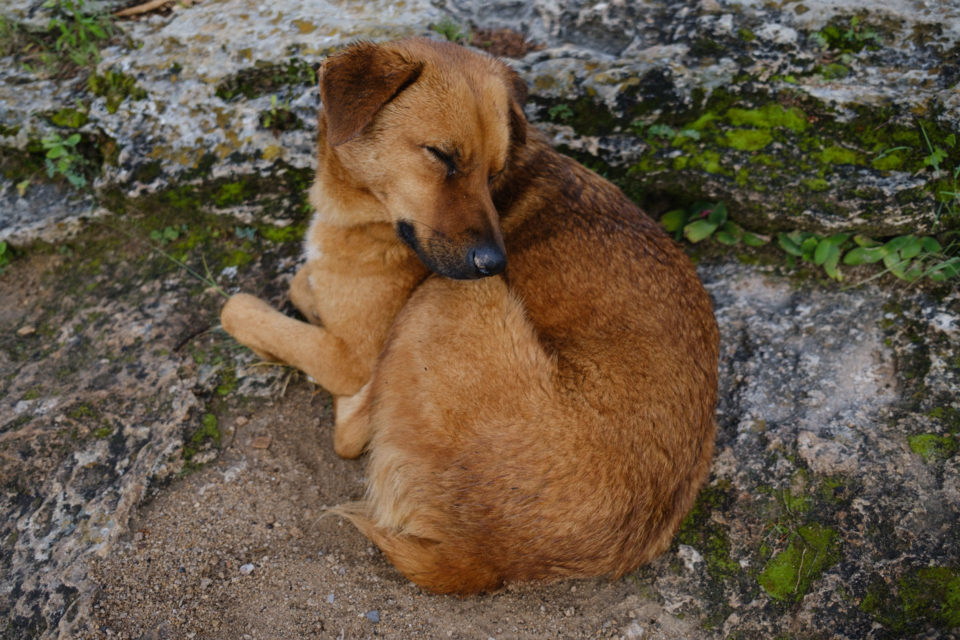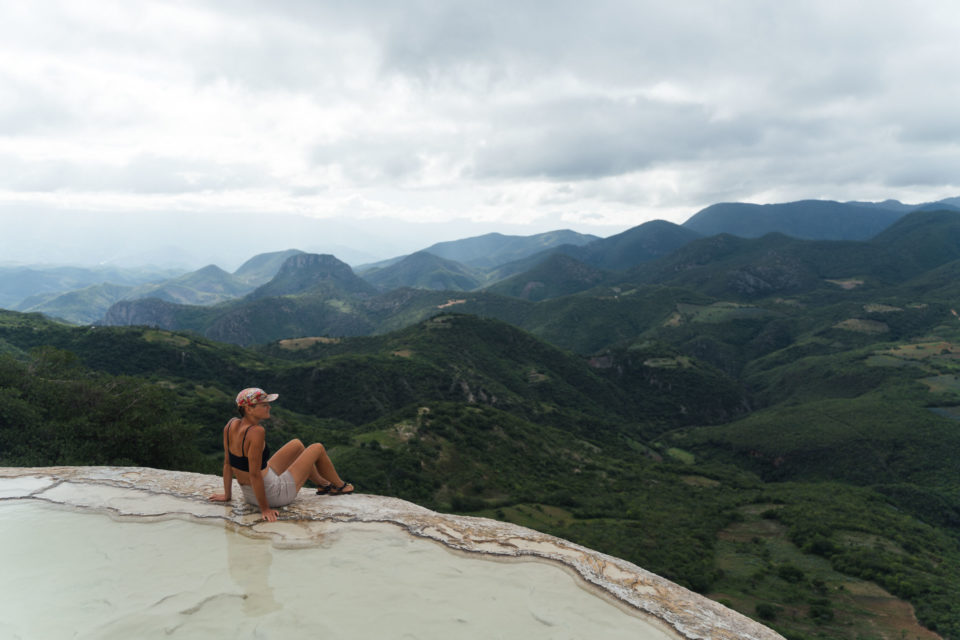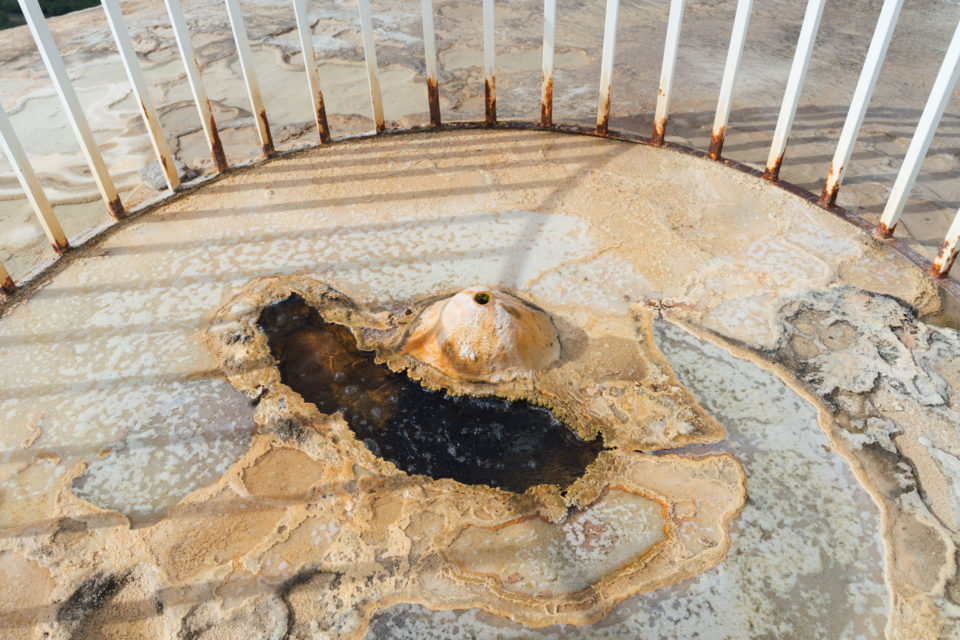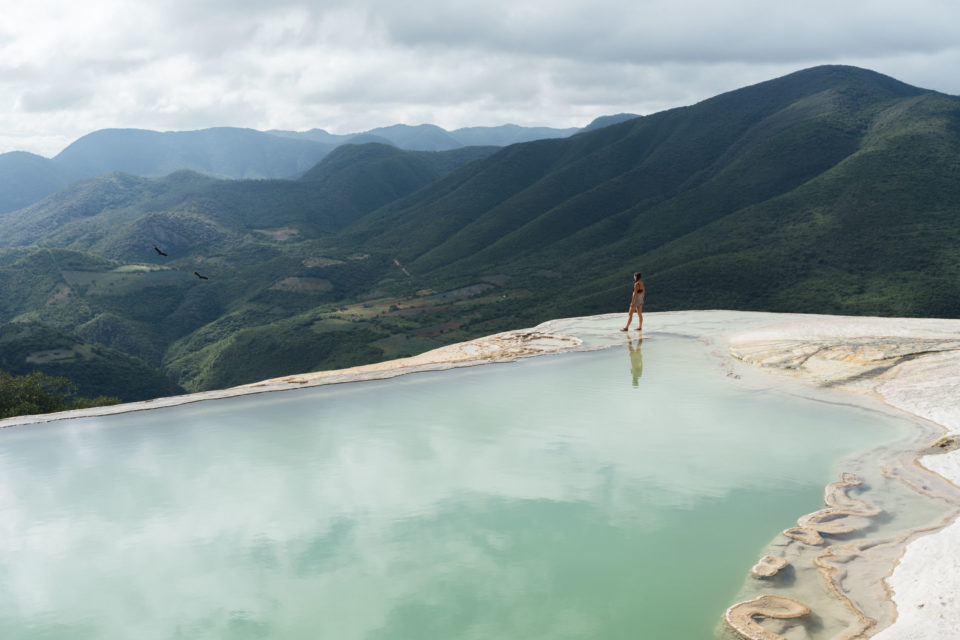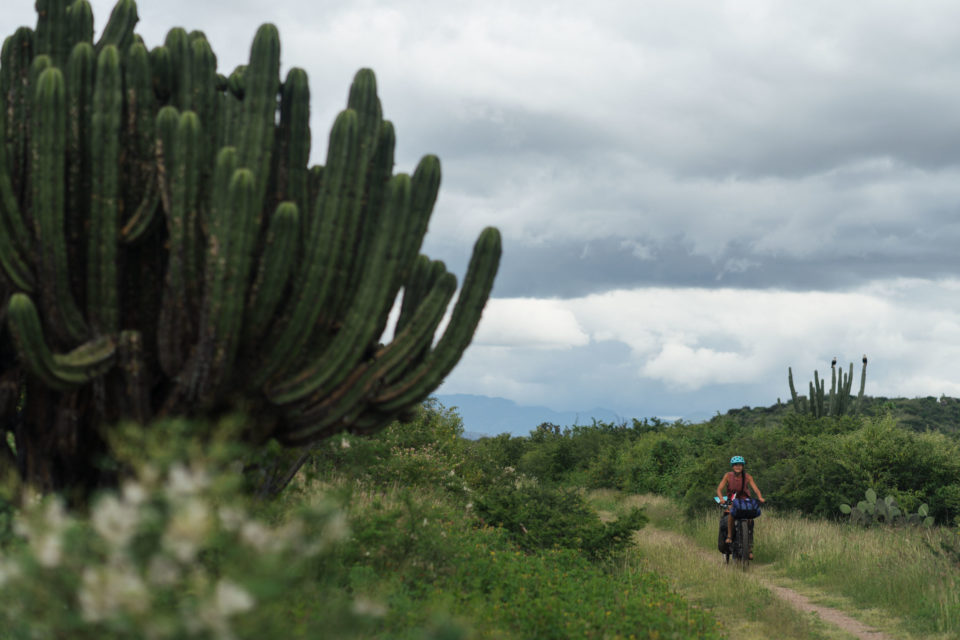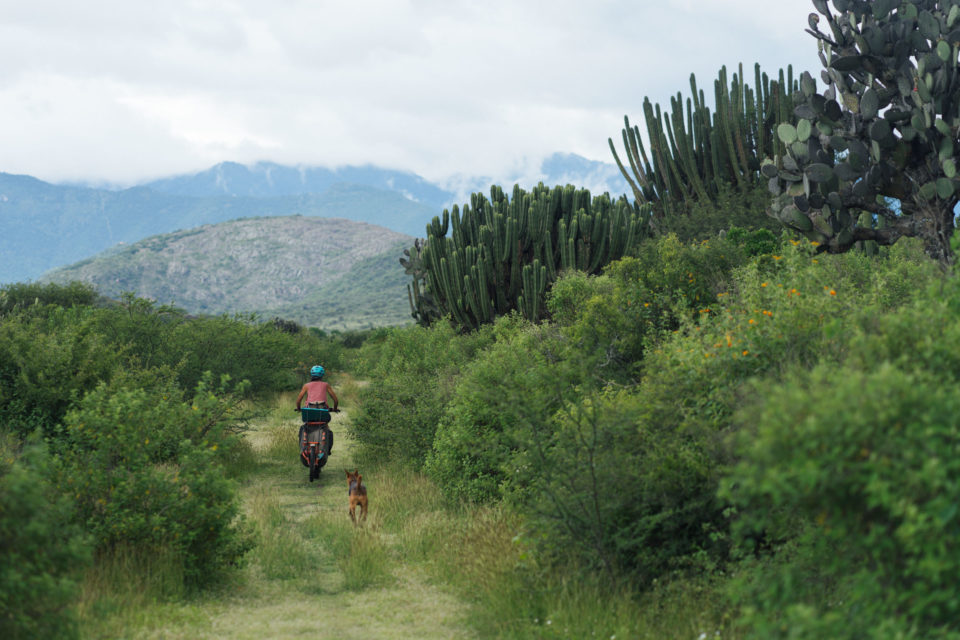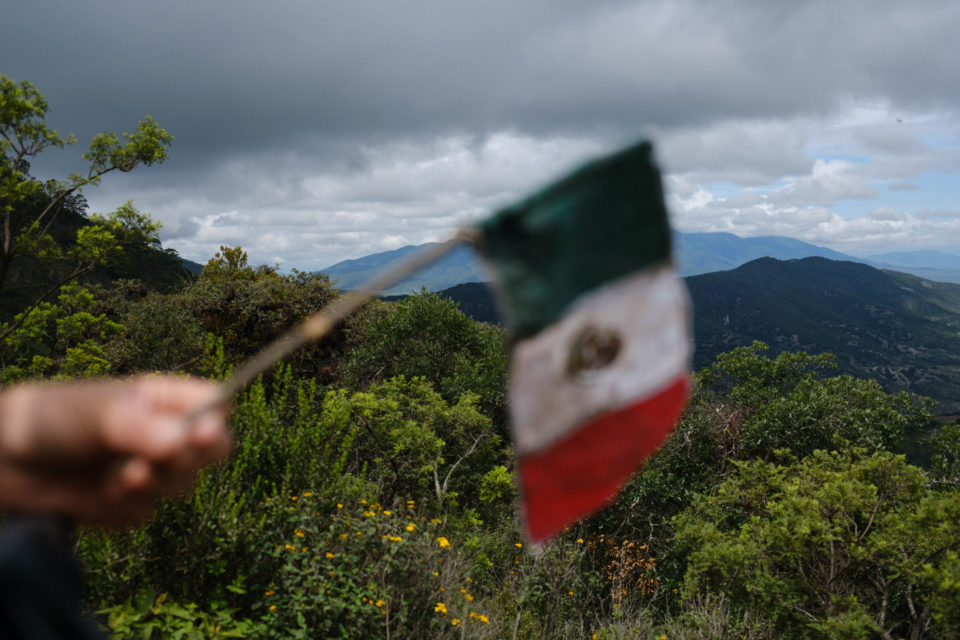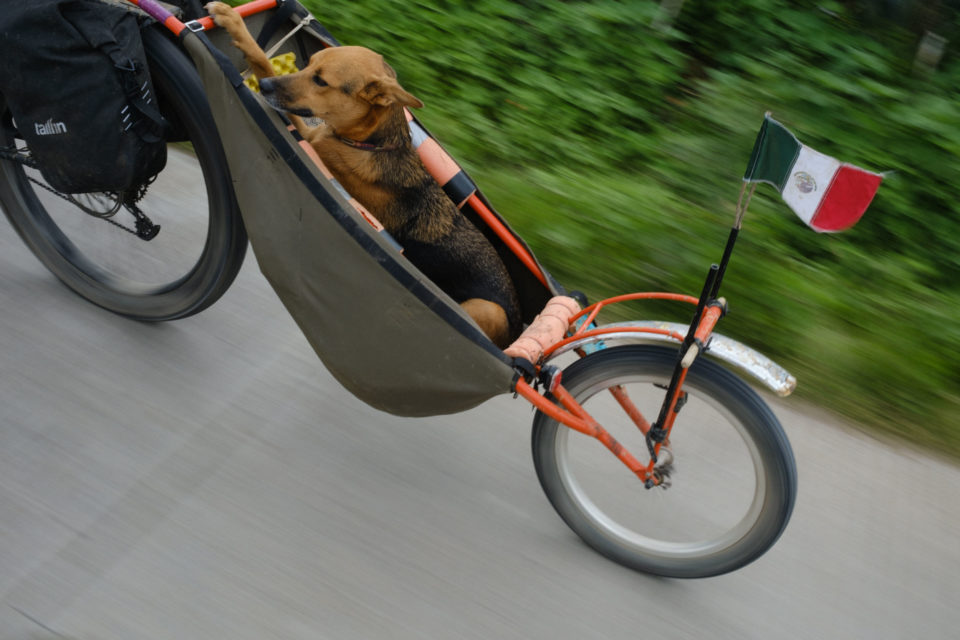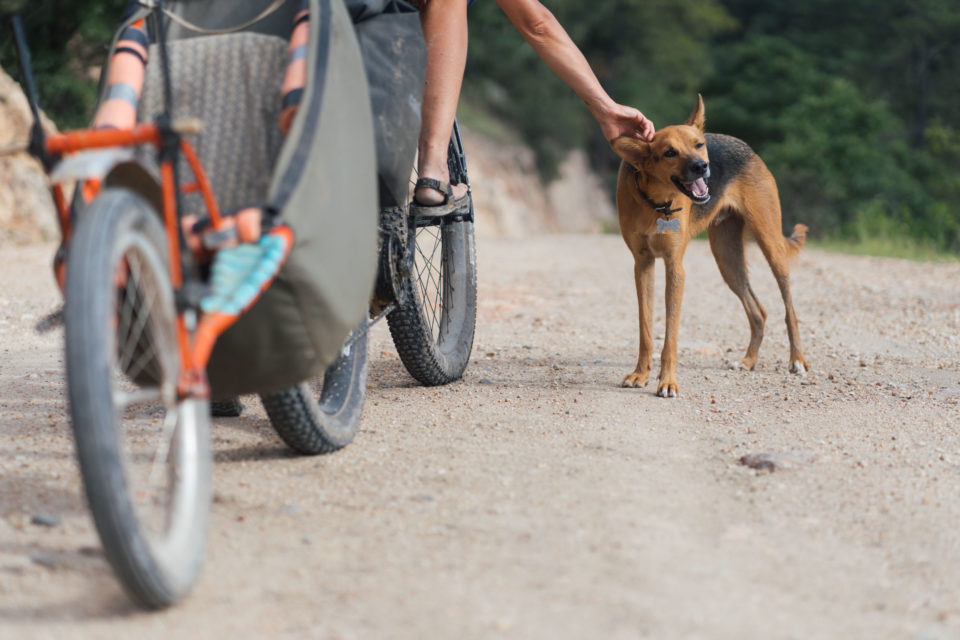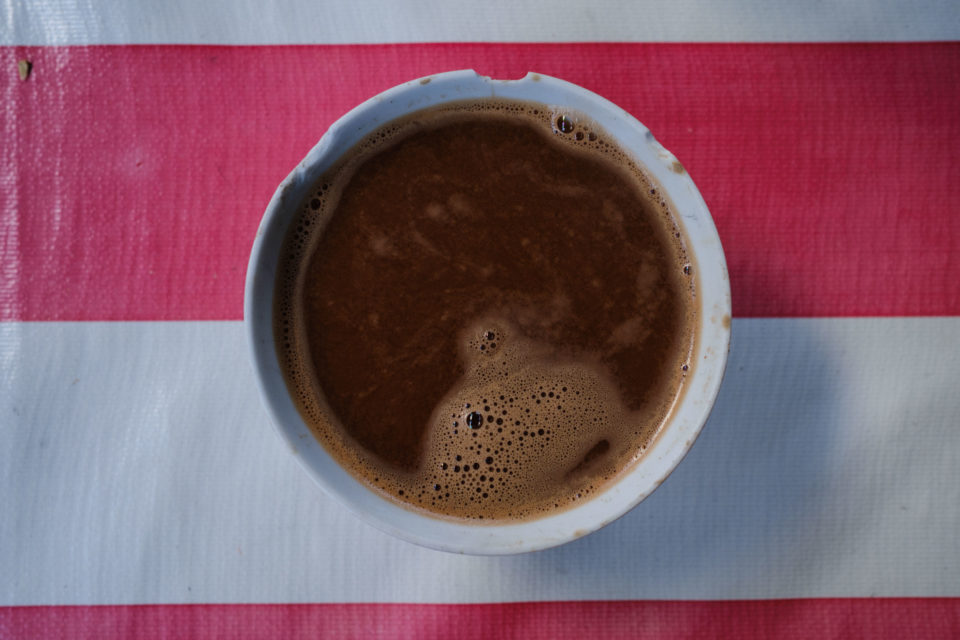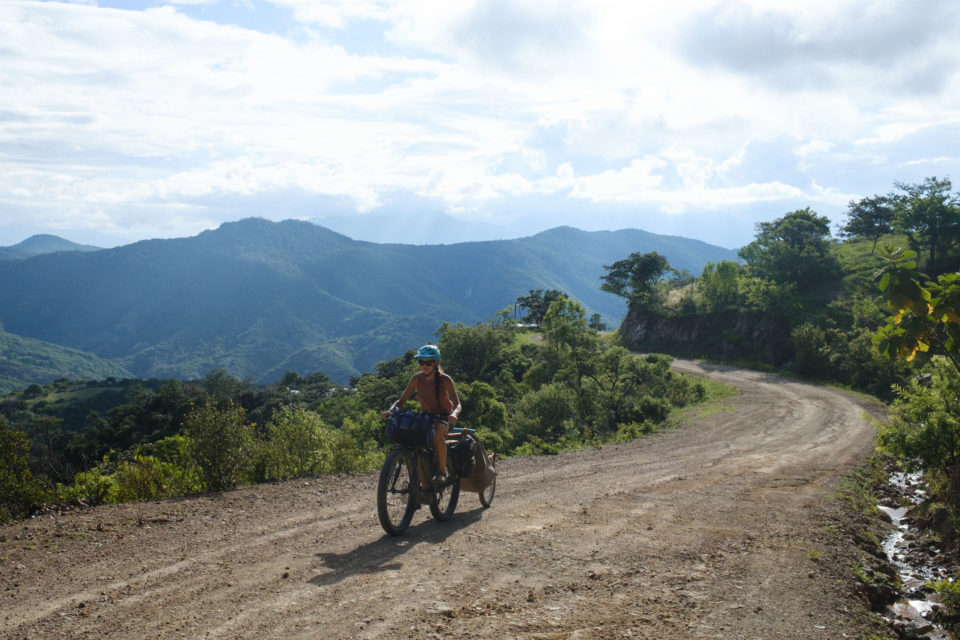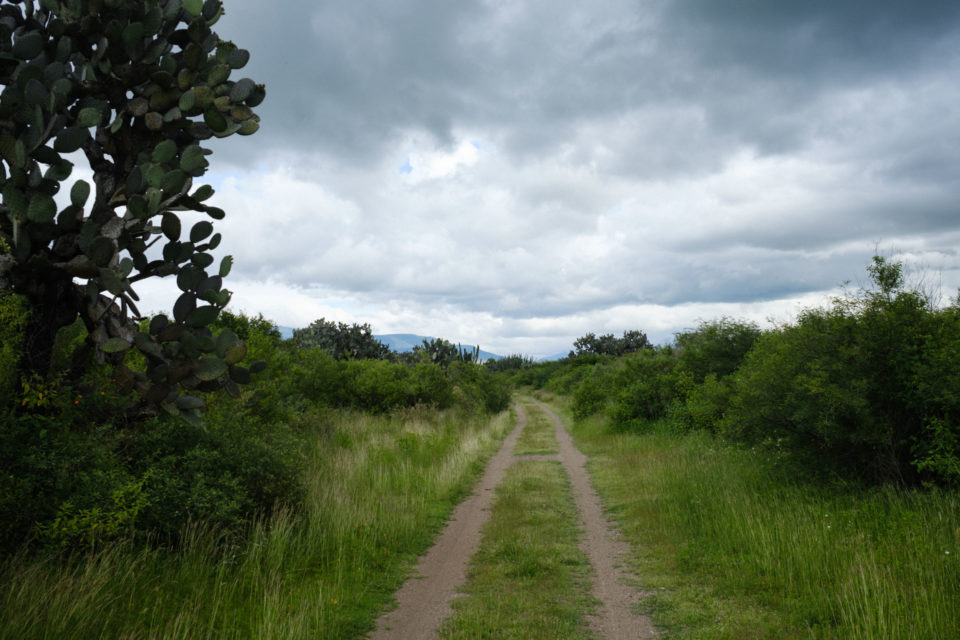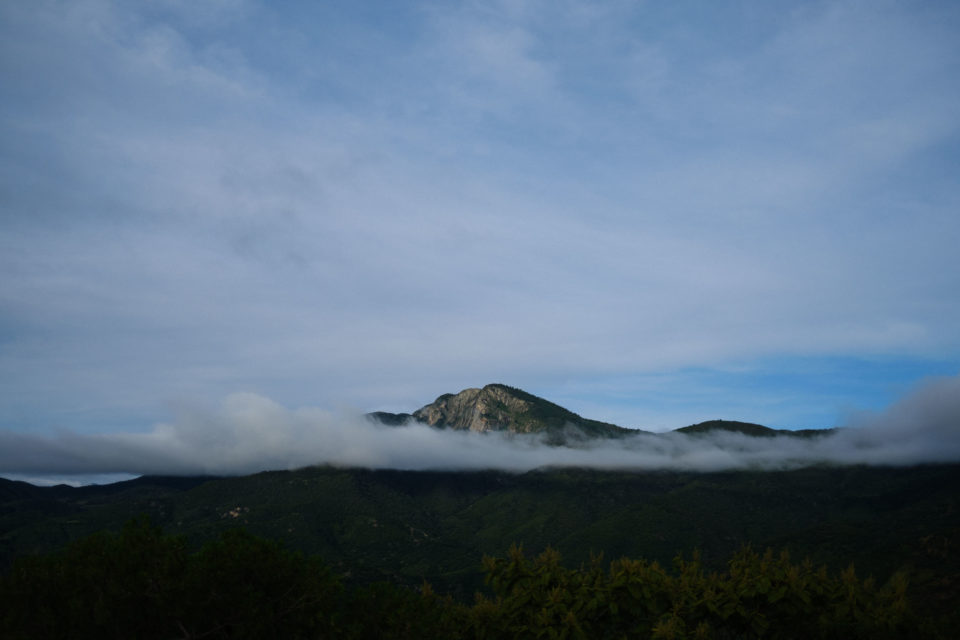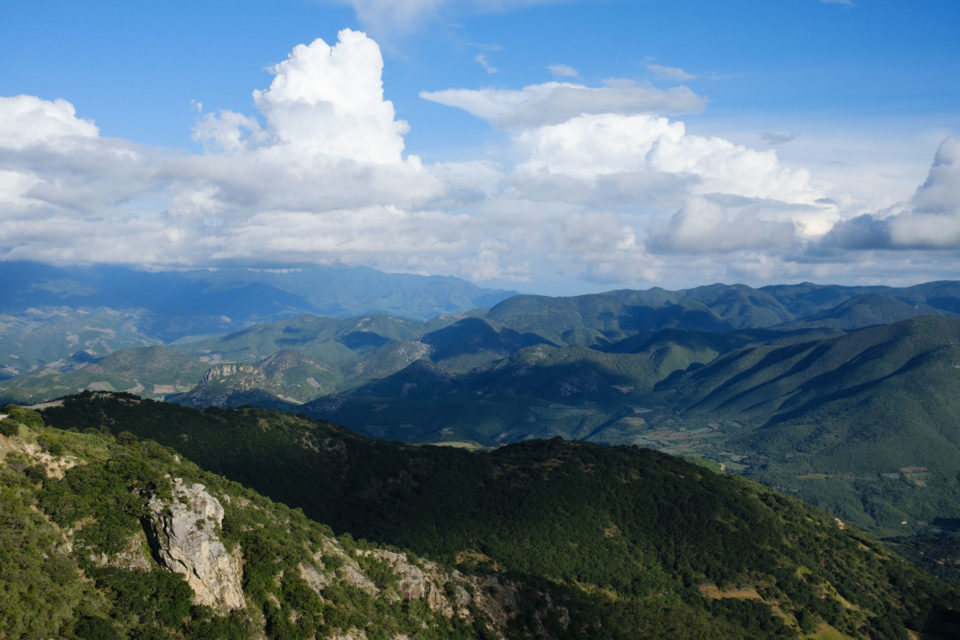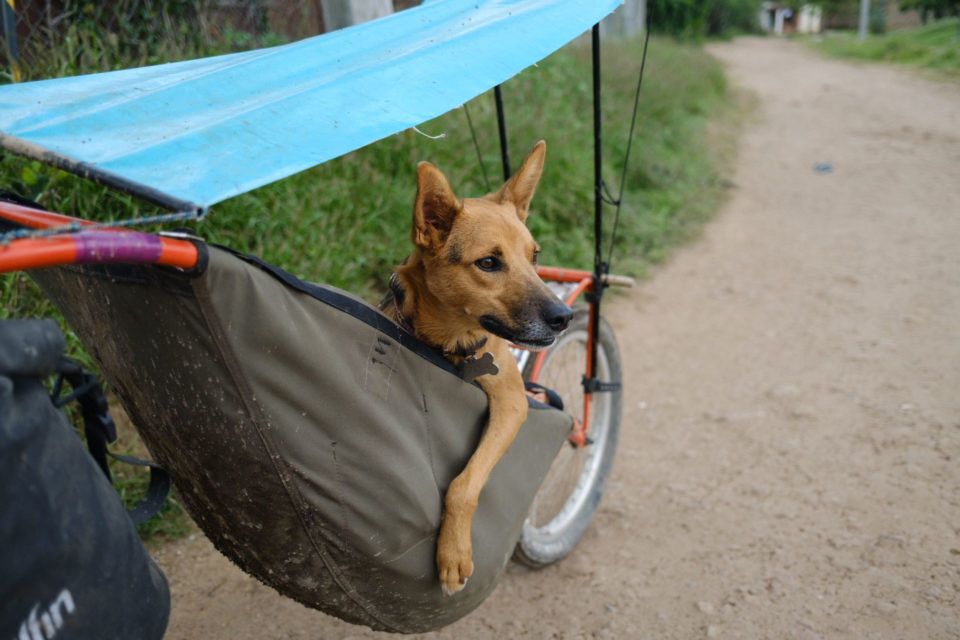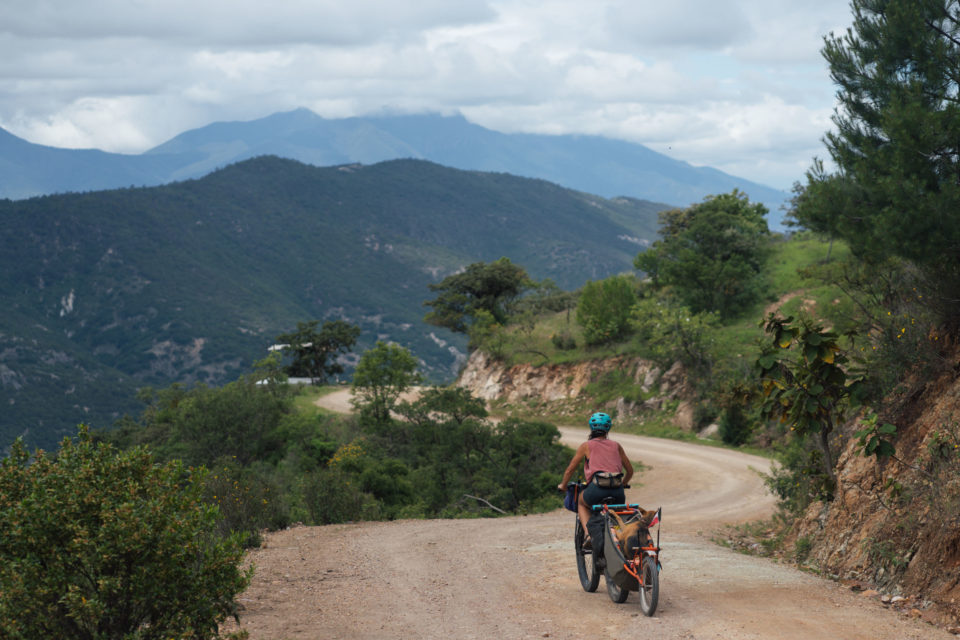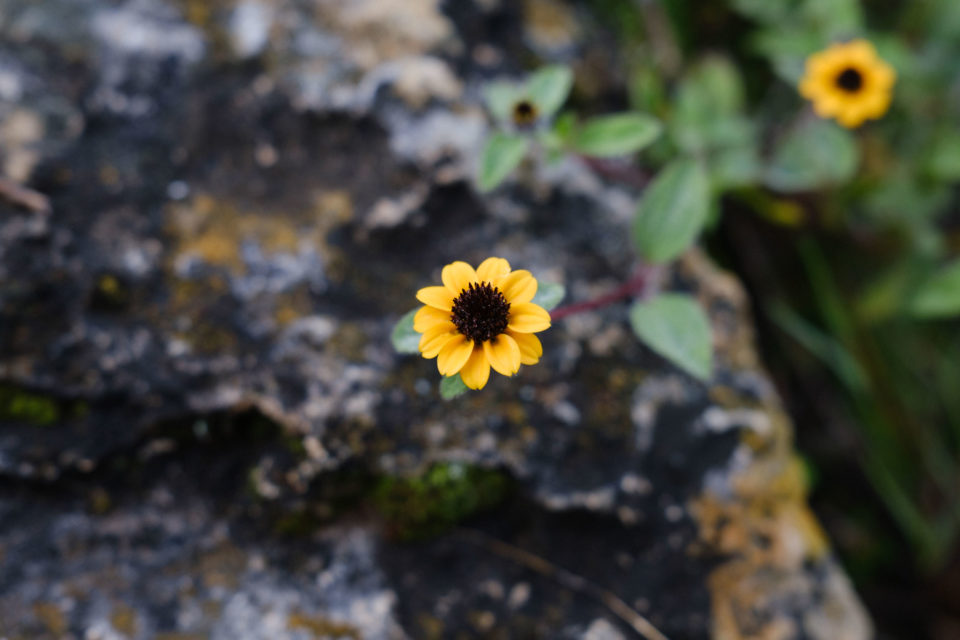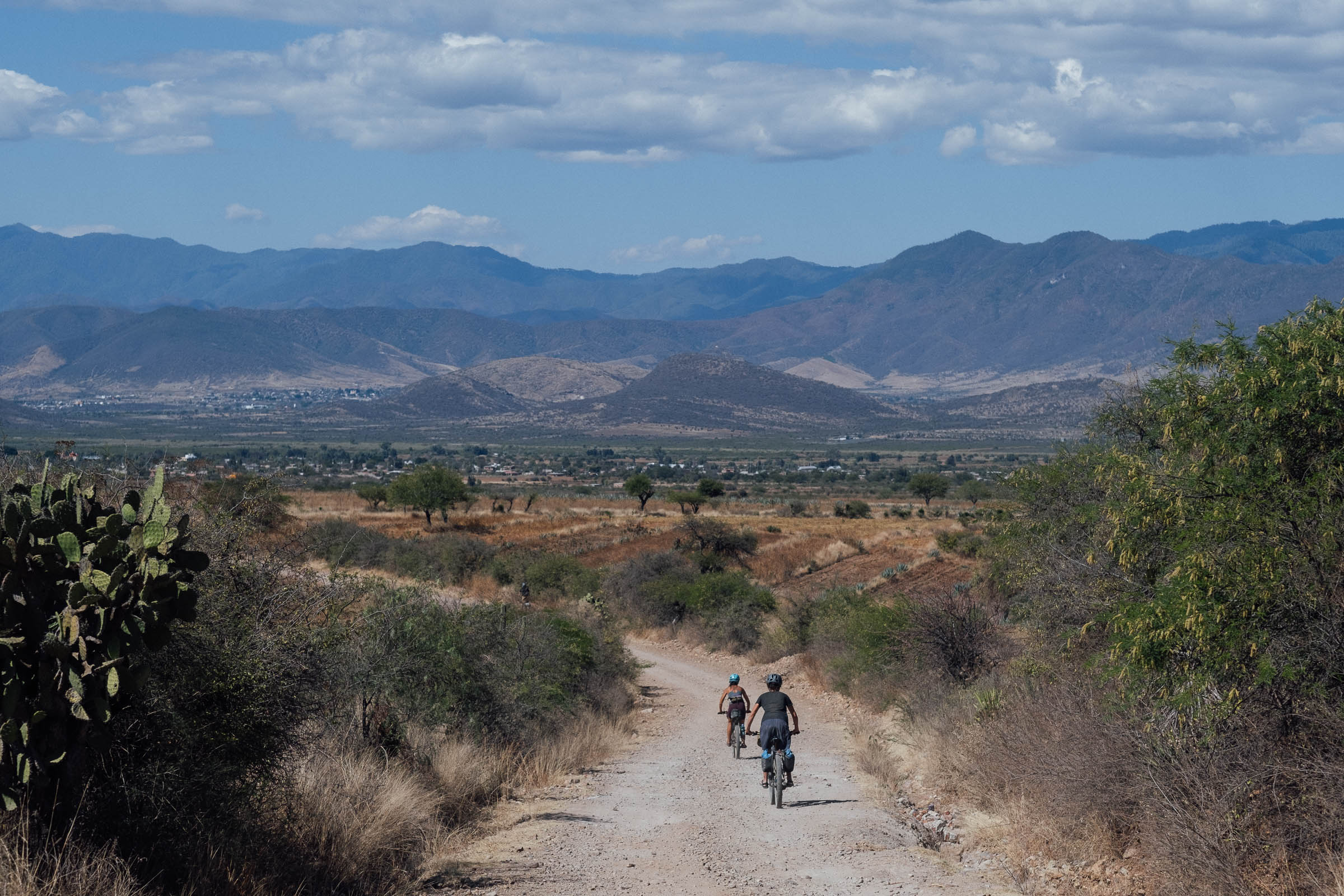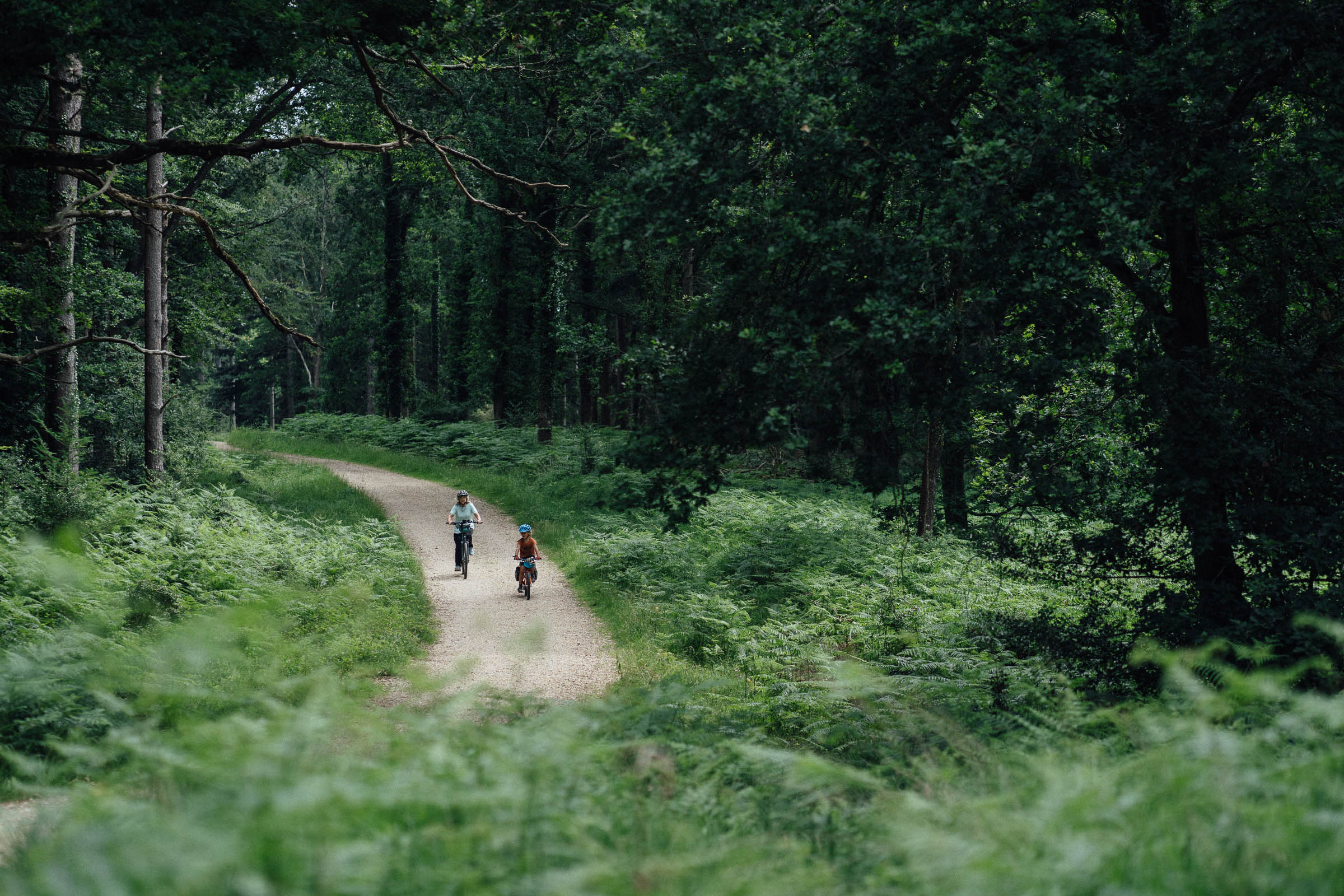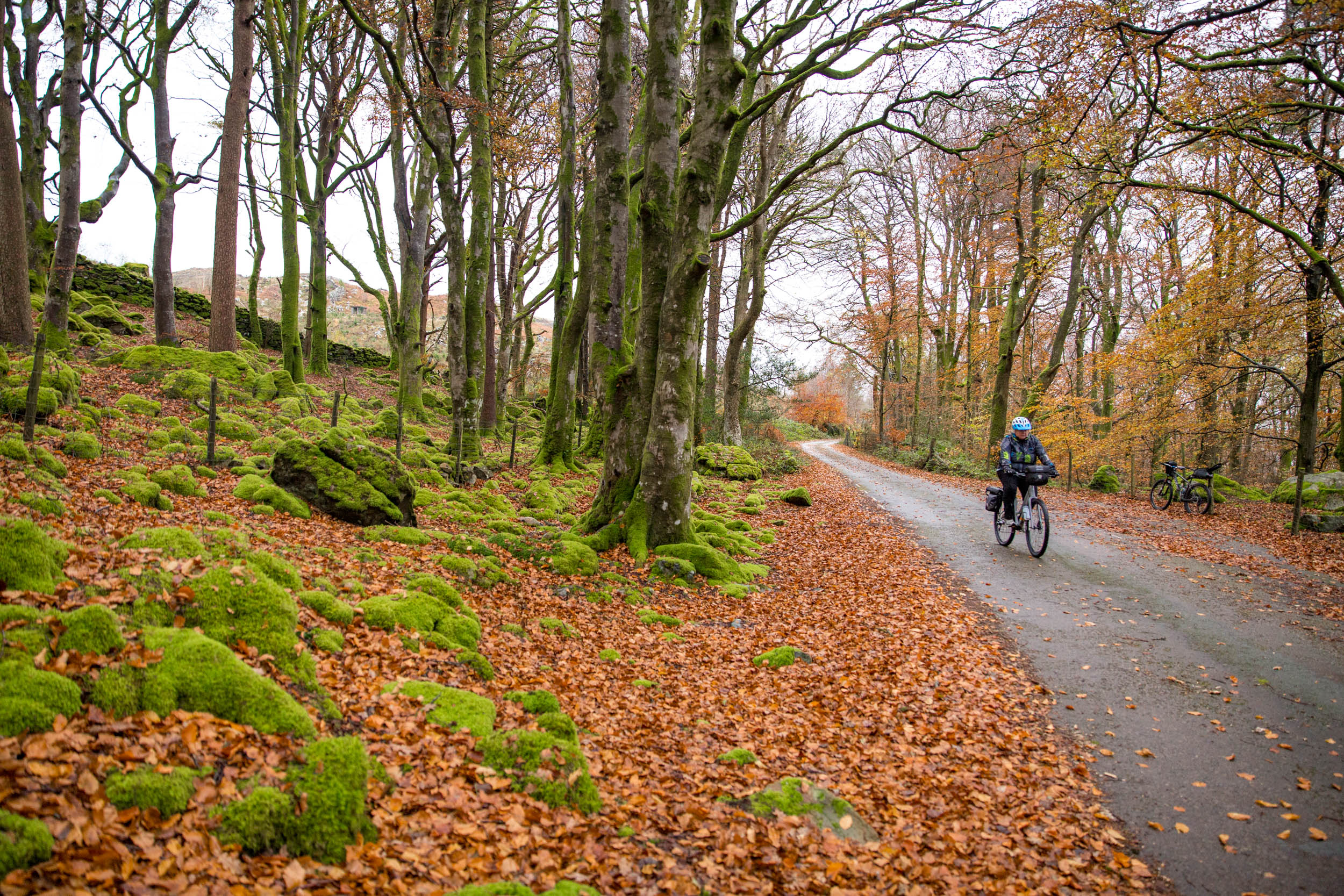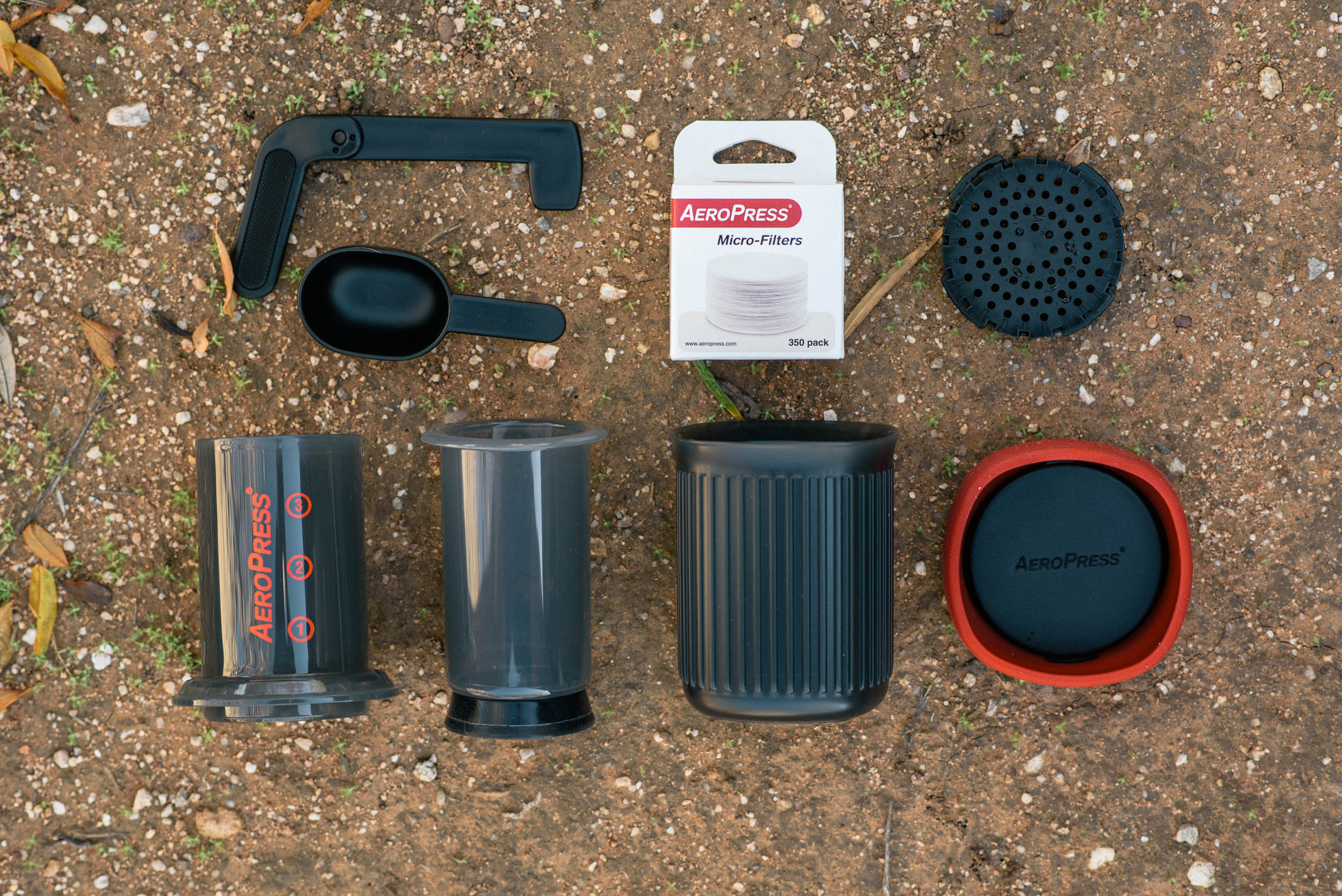Hierve el Agua: Electric Coffee Outside with a View
Cass heads out on a well-loved local overnighter that promises a glorious spot for making coffee outside with a view. This time, however, he also broaches the world of e-bikepacking and wonders when it might have a place, whether it can be as immersive an experience as pure pedal power alone, and where e-bikes may play their most valuable role…
PUBLISHED Sep 22, 2022
Perhaps you’re familiar with the coffee outside concept, wherein a cyclist awakens from slumbers early, fumbles in the half-light for coffee-making apparatus, and rides to a pre-determined spot with friends. Fresh coffee is then prepared using any one of a number of recognised methods, from the humble sock to the deluxe Aeropress, and decanted with a photographic flourish into a favourite receptacle. This precious liquid is invariably imbibed whilst enjoying a view of some sort – preferably a glorious one for the full coffee outside effect – before any remaining pastries are vacuumed up, the aforementioned coffee-making apparatus is hurriedly dismantled, and everyone shoots off back home or to work before the day has even begun, glowing and buzzing with joy.
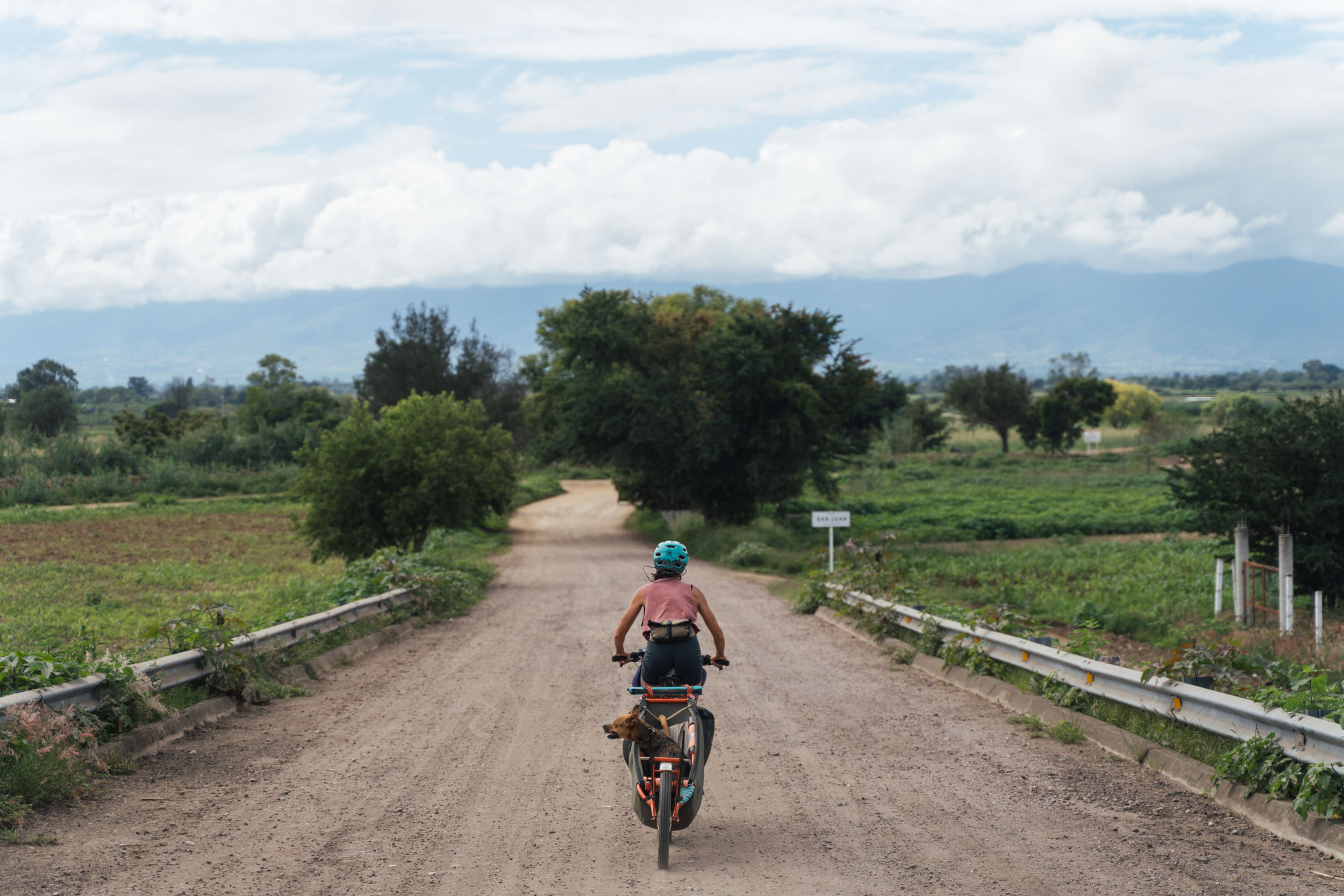
Even if this particular ride wasn’t quite as succinct as the above, its coffee-flavoured, out-and-back nature somehow lent it similar vibes. Broadly speaking, it follows one of my favourite routes that I’ve posted to the site – Meandros en Mitla – albeit a modified version. In its reworked form, it’s a respectable 70 kilometre ride from town to reach a set of magnificent, carbonated mineral pools and petrified waterfalls – Hierve el Agua or “The Water is Boiling,” even if they’re not actually hot – that lies at far end of the Mitla valley, just over a small mountain pass. Conditions-wise, you can expect flat dirt roads for the most part, the promise of a headwind, then a stout 650-metre (2,000-foot) climb to contend as a finale for the day. The outward journey accrues 900 metres (almost 3,000 feet) in elevation gain, making it a solid enough ride for those wanting to enjoy a coffee outside overnighter, Hierve-style.
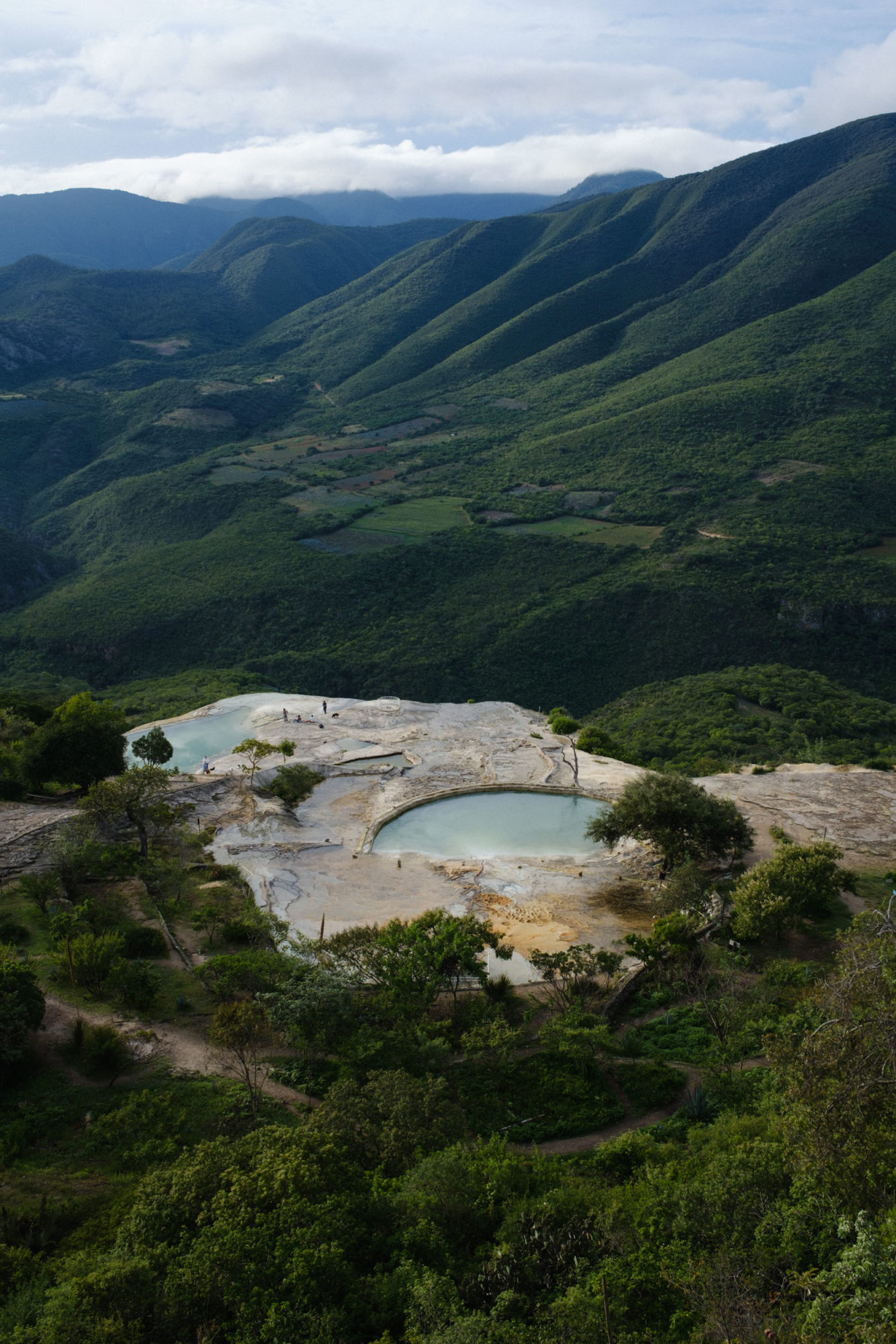
I say overnighter because even if you can make it there and back in a formidable day, I’d recommend camping out to best savour the late afternoon light and catch the early morning luminescence – plus, you’ll likely have this popular Insta-backdrop to yourself. Right now, seasonal storms are even whisking up wonderful cloudscapes into the ether, and when they’re permeated by the sun, the surrounding mountain folds – carpeted as they are in oak forest – are all the more magical. There’s even a spot to camp and cabaña to rent, though it’s best to bring ear plugs, as you’ll likely be sharing the area with a pack of resident dogs and perhaps an impromptu village fiesta.
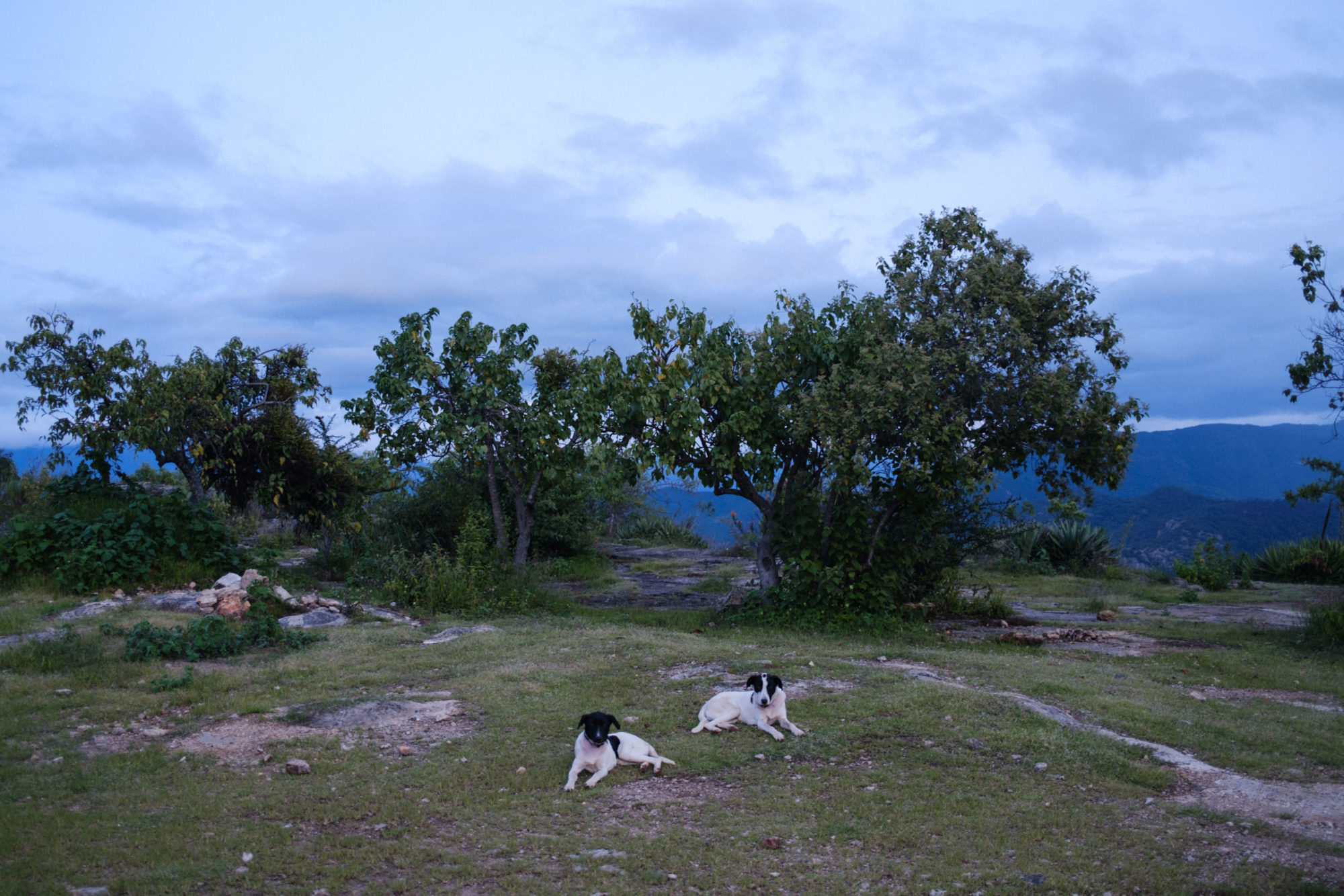
It’s also a ride that offers all manner of permutations, including pausing in archeological sites like Dainzu and Yagul, with countless ways to connect one farm track and terracería with the next. My favourite route includes a stint on the Camino Real, an extension of the 2,560-kilometre trade route that once ran from Mexico City to Santa Fe, New Mexico, that just so happens to be extremely muddy right now. However you choose to avoid the gloop, the roads all converge in Mitla, where the climb begins in earnest – so save some energy for the final push.
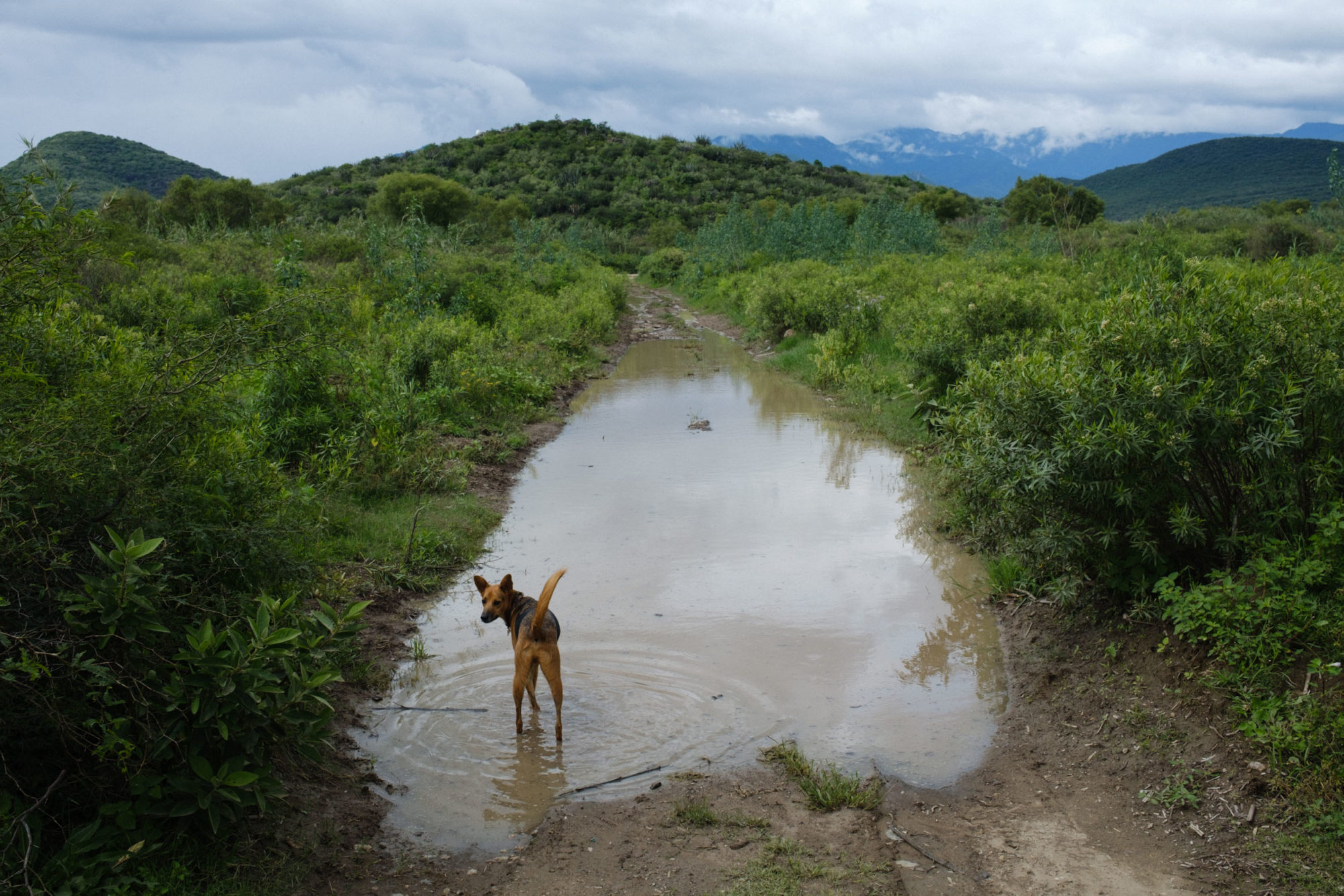
Speaking of which, it’s also a ride that, on this occasion, we chose to undertake with both a standard issue, muscle and sinew-powered bicycle, and one with a little extra electric oomph. Granted, it would be earning its keep with extra hauling duties, namely pulling 18 kilograms of dog and 6 kilograms of trailer, on top of all the usual camping paraphernalia (so don’t judge us just yet). I’m not going to dive into too many details about the bike itself – a Jones LWB HD/e Complete that I’m in the process of reviewing – except to mention that it’s a burly touring rig with an optional mid-drive Bafang 750W BBSHD motor that’s completely removable for fully ‘analog’ excursions, as long as you have some mechanical nous, a few tools, and an hour or two of to spare.
But back to the ride at hand. For good reason, Hierve el Agua is a popular spot for locals and tourists alike. Almost everyone who visits drives out there for the day, be it in private vehicles, as part of a tour from Oaxaca, or using public transport – there are even collectivos that ply the dirt road from Mitla to the pools when there are enough passengers to warrant the journey.
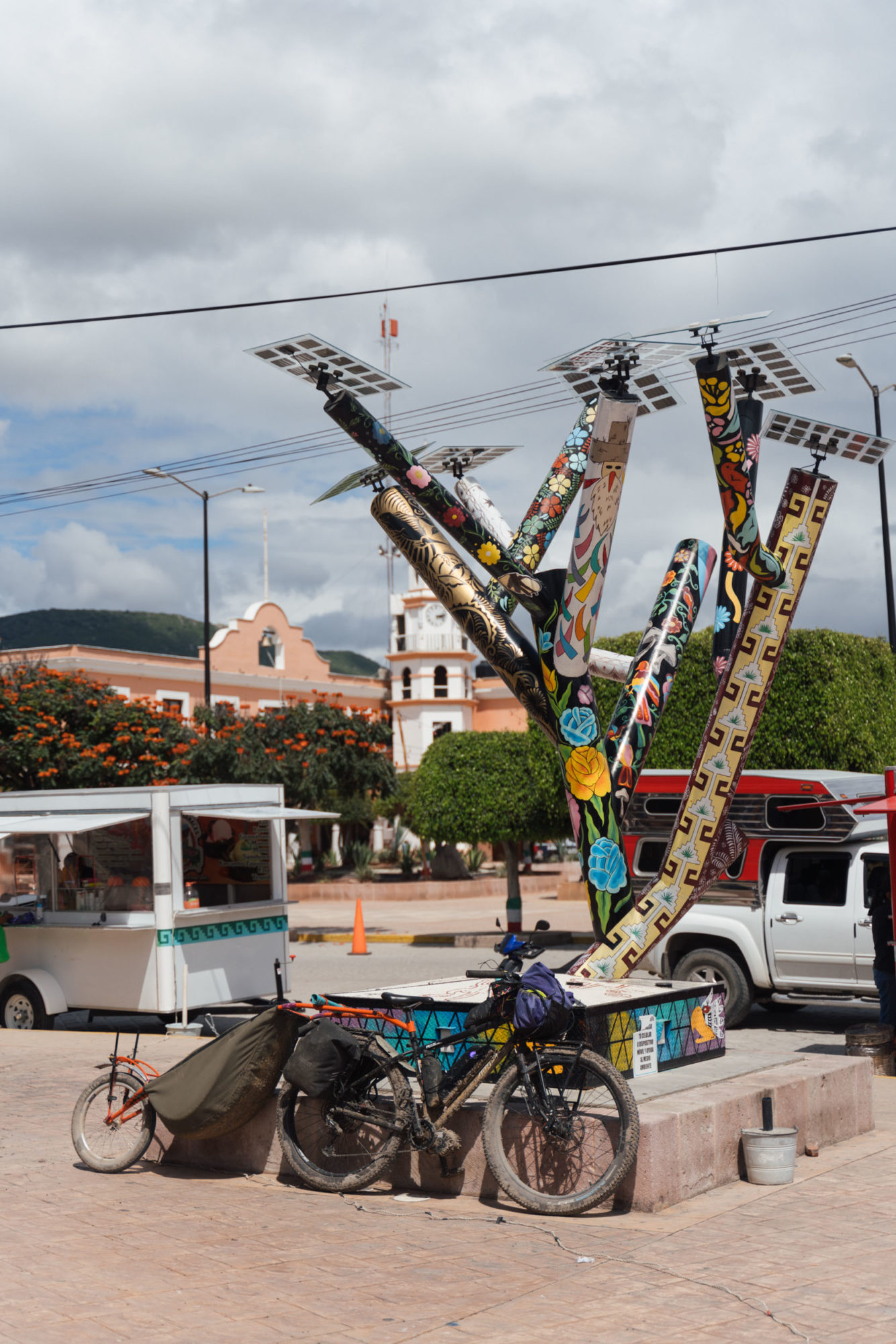
First things first, though. Known for its Zapotec archeological site and its 12,000-year-old cave paintings, Mitla holds a special place in my heart, on account of its delicious homemade ice creams (coconut and queso con zarzamora are my favourites). Given the addition of an e-bike, however, this time we also availed ourselves of plaza’s ‘solar cactus’, a colourful structure generously endowed with panels and charging ports. I won’t deny an appeal in charging our own bodies and that of the bike’s at the same time, with locally made fuel!
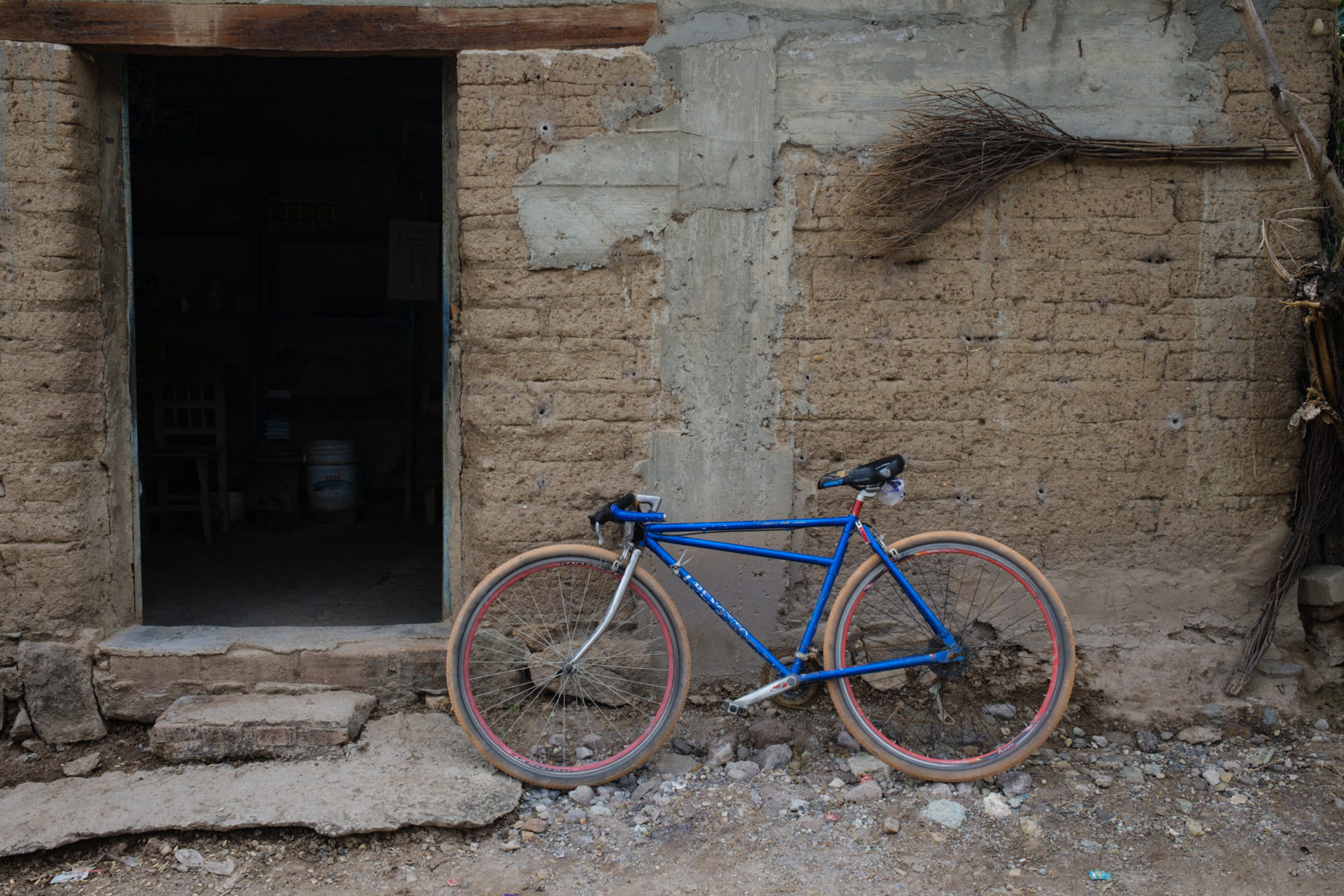
Passing by the mezcal-proud settlement of Xaaga (where time stands still and fencelines of columnar cactus stand vigil), pavement soon gives way to dirt and flat terrain to switchbacks. As usual, Huesos hopped out on the climb, which meant that Emma could keep the e-bike in an efficient ‘eco’ setting, effectively cancelling out the trailer and extra payload, and allowing us to ride side by side. A 650m (2,000-foot) climb with ever grander views leads to the pass top where we stopped to watch a rainbow, then down the other side we plummetted – e-bike engine off, all its extra heft anchoring the bike to the ground in the same unstoppable and satisfying way as a heavily laden touring rig.
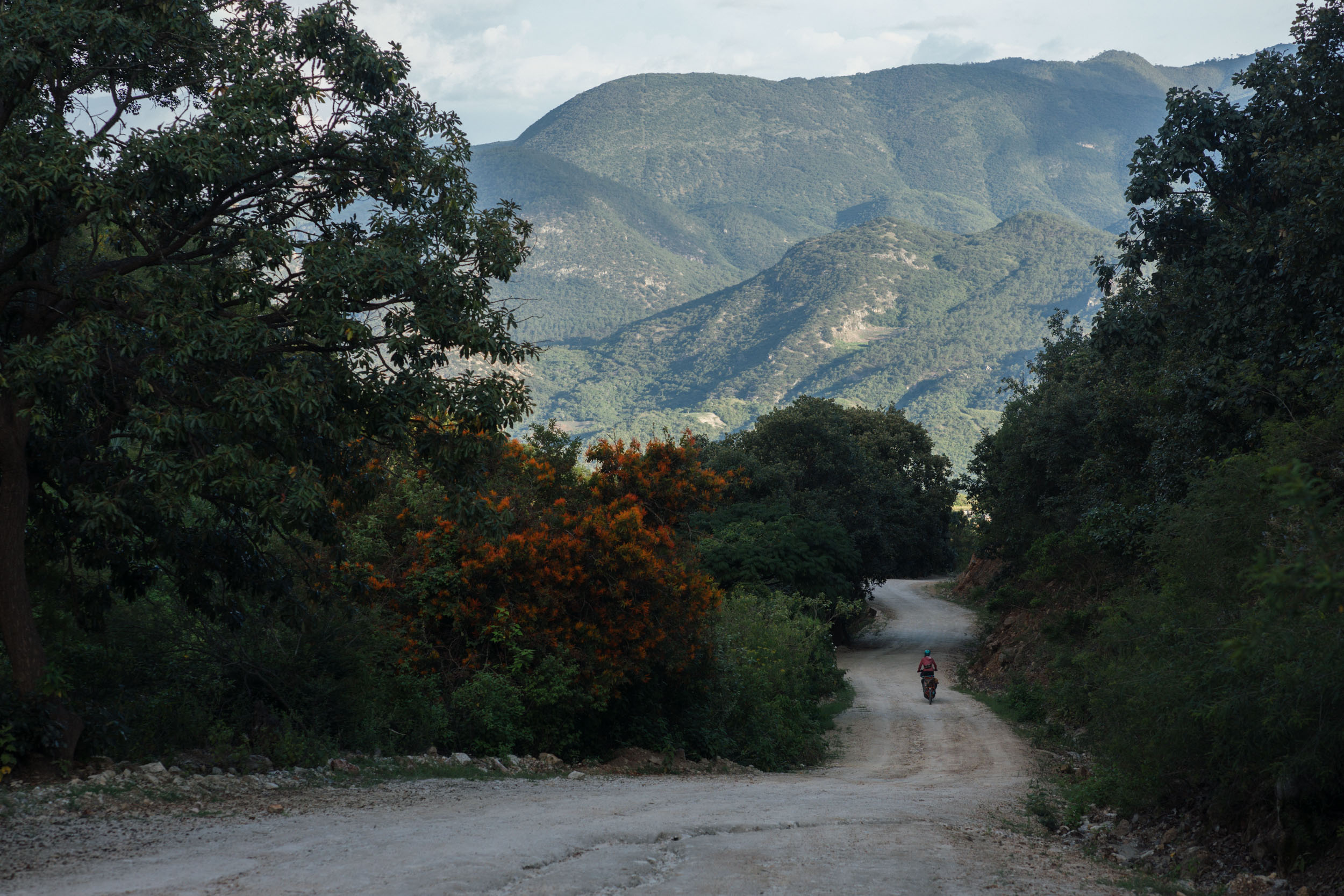
There’s a parking area and food stands for those visiting the pools, though by the time we got there and paid our entrance fee, everyone had long gone for the day, bar a couple of car-campers who were picking their spot for the night. Half a dozen dogs lurking around the complex ensured Huesos had buddies to play with, at least once they’d all stopped barking at each other from afar and he’d established a no-go perimeter around the tent. First though, e-bikepacking chores: finding a plug. Due to the informal nature of camping in Mexico, this meant leaving the battery to charge some ways away from the tent, so I set duly my alarm for 5:30 the next morning to scoop it back up.
As for the fabled coffee outside the next morning, it was just as we’d promised ourselves. Initially, the sky was overcast and the idea of extricating bodies and coffee making gear from the tent, let alone paddling our feet in the cold pools, didn’t seem especially appealing. But by the time our water came to a boil and our life elixir was ready, the sun had peeked through and the light was heavenly. I even had time to take a quick, Wim Hof-like swim and a set of empty-Hierve photos before the tour vehicles began to arrive earnest, signalling our time to turn around, climb back up to the pass again, and head for home.
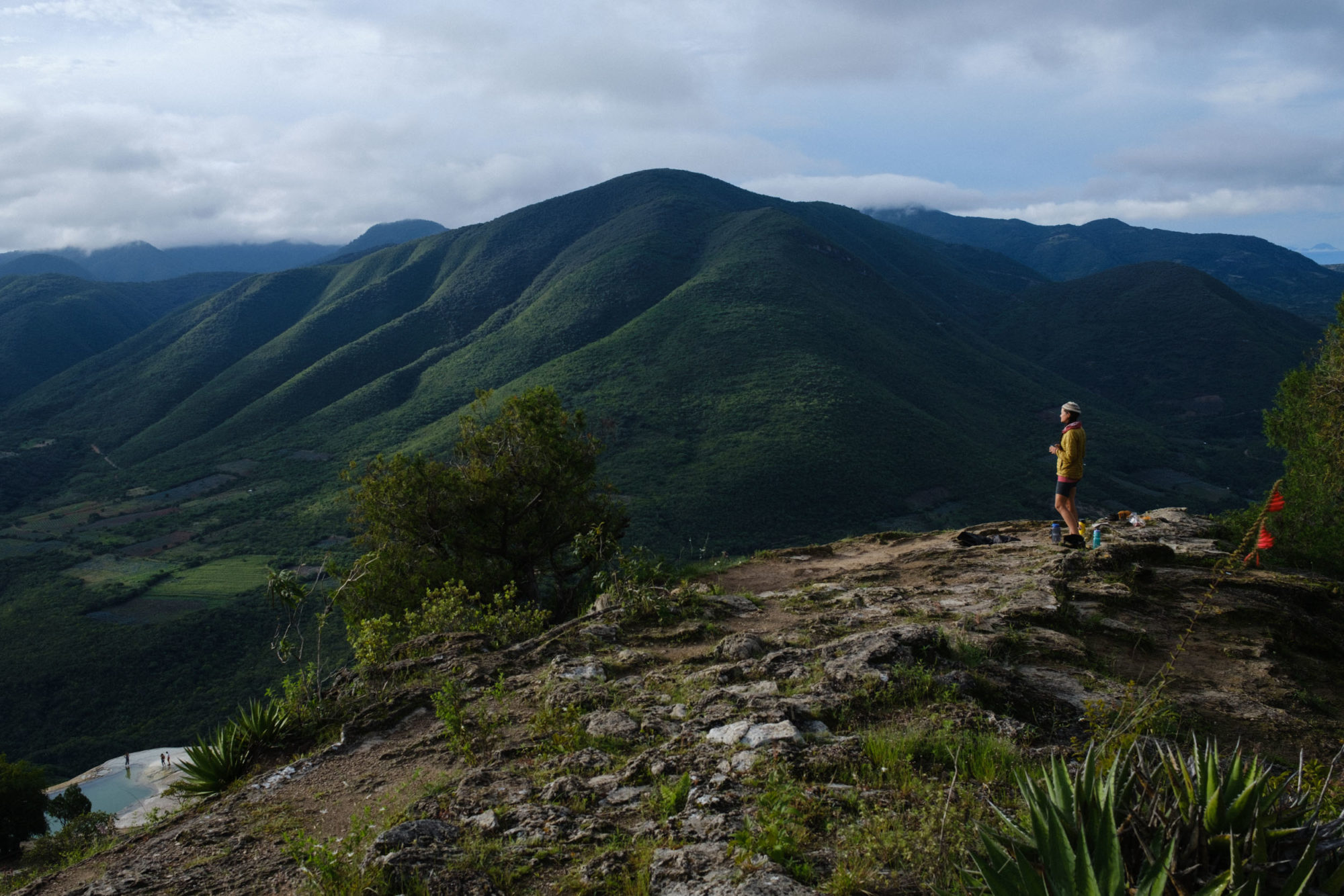
While there was no need to top up the bike with Solar Cactus Juice on the way back, we treated ourselves to a coconut ice cream brunch nonetheless. Then we rerouted around the Camino Real to avoid an especially muddy stretch of road, encountering a veritable swamp in its place – a good testing ground for the Bafang, then! As conditions became firmer, we picked up speed and rode along at a good clip – it was fun to ride fast and have the dog with us, as often it’s an either/or situation. Knowing the lay of the land, I’d considered passing by the property of a friend who lives off-grid, to make use of his solar panels over converation, but it was clear that if we were mindful of how we rode, we had nothing to worry about.
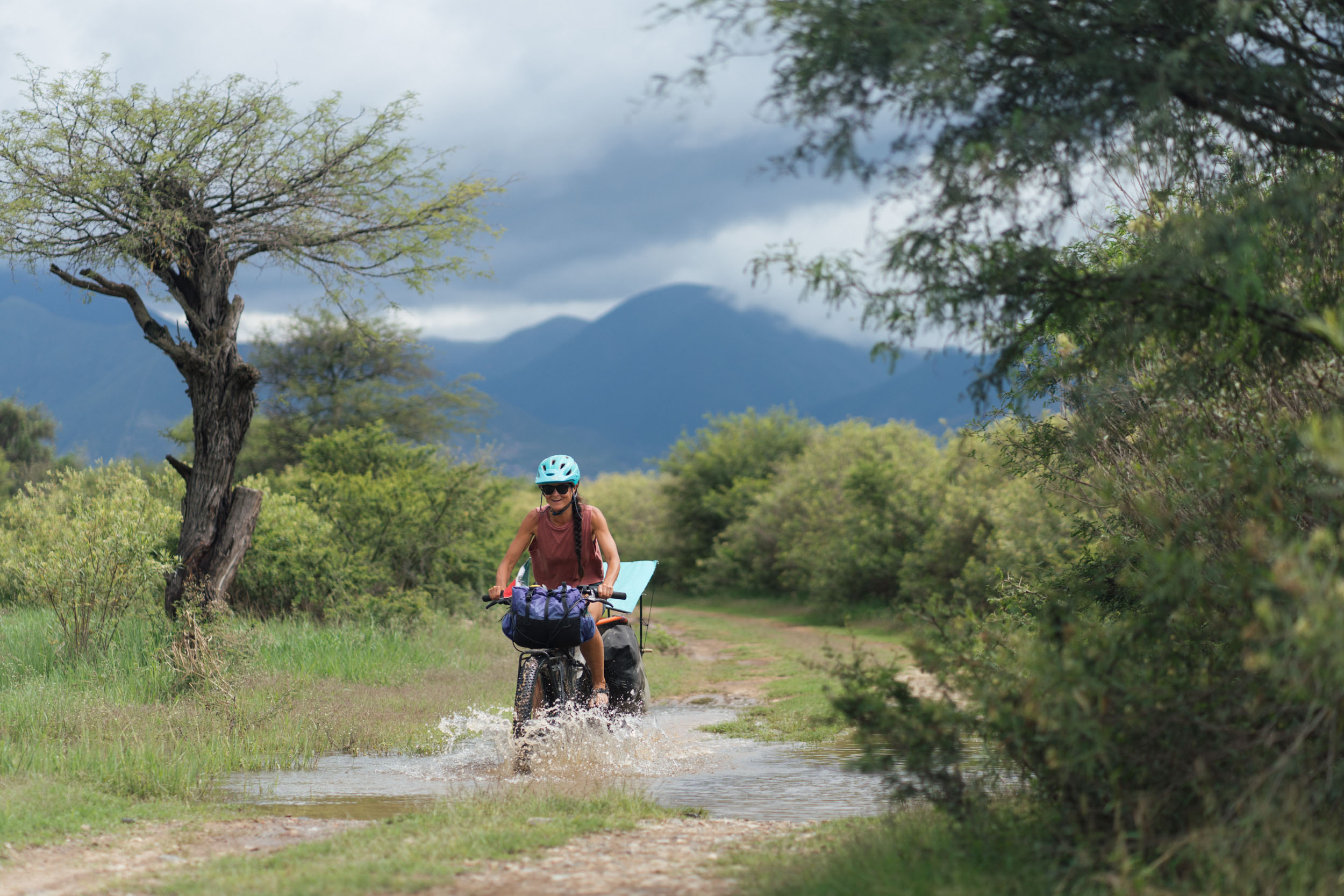
Even as a self-professed pedal power head, I won’t deny that the e-bike made pulling the trailer more enjoyable on this short overnight escape from town, and thus something we’d be more likely to organise on a whim. Emma noted that it didn’t provide as much of a workout as on her standard bike, so there’s still some fine-tuning to be done in terms of how much electric assist the engine offers, and what you want from it. In our case, I’d like to tune it to a level that allows the ‘trailer puller’ and the non-assisted cyclist to ride at a similar pace, ideally with a similar amount of effort exerted too.
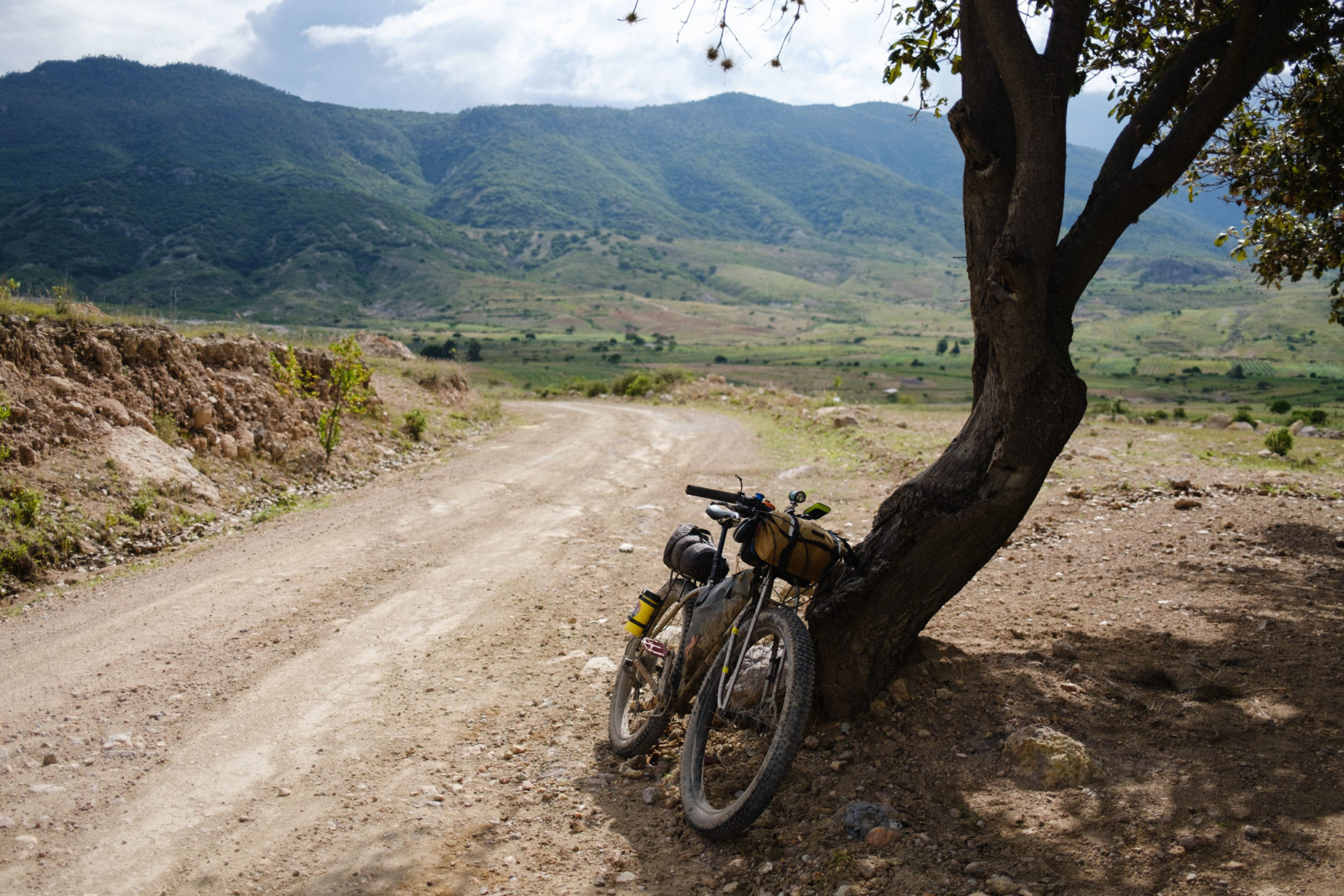
Most tellingly, the electric assist was especially useful when leaving the bike path from Tule and riding back through the city, straight into the thick of the rush hour. Being the eve of Mexico’s independence day, traffic seemed especially hectic and erratic, an urban dynamic where an e-bike shines. Which brings up a good point, perhaps. I recently realized that I no longer enjoy cycling in cities, at least those with little bicycle infrastructure. I dislike racing to the next traffic light in fear for it turning red before I can get there, and I’m disgruntled when a car pulls out right in front of me, because whoever is driving it deems me ‘too slow’.
Ridng an e-bike has helped level the playing field in a way that I wasn’t expecting, with welcome consequences. There’s no longer any need for crazy, circuitous detours to avoid larger roads. I can keep pace with vehicular traffic rather than feeling subservient to it. I can outflank an angry bus or dodge an unruly truck, and I can pull safely away at traffic lights, even when I’m towing a trailer full of dog food, or even a dog. Biking in a busy metropolis is fun again! Considering over half the population now live in cities, the ability of e-bikes to be a part of the changes needed to make them more liveable feels especially relevant right now. Not only can they substantially boost the range that cyclists can commute, comfortably and on a daily basis, but they demand a far smaller place on the road than the ever-larger cars they can replace, both in motion and when they’re parked – the importance of the latter is often overlooked. Just imagine how much city space for walking and relaxing that could create!
Riding one the last few months has made me realise that for me, owning an e-bike wouldn’t really be about choosing it for bikepacking specifically, even if I wouldn’t hesitate to use it on the right occasions, like the short trip described here. It would be about how much I’d ride it day to day. Perhaps if you live in a city with well-developed cycling infrastructure, it may not seem such a necessity. But if you’re a pedal-powered minnow swimming in a river of petrol-powered eels, it will likely prove itself invaluable – and potentially transformative – in how you move yourself around a busy city.
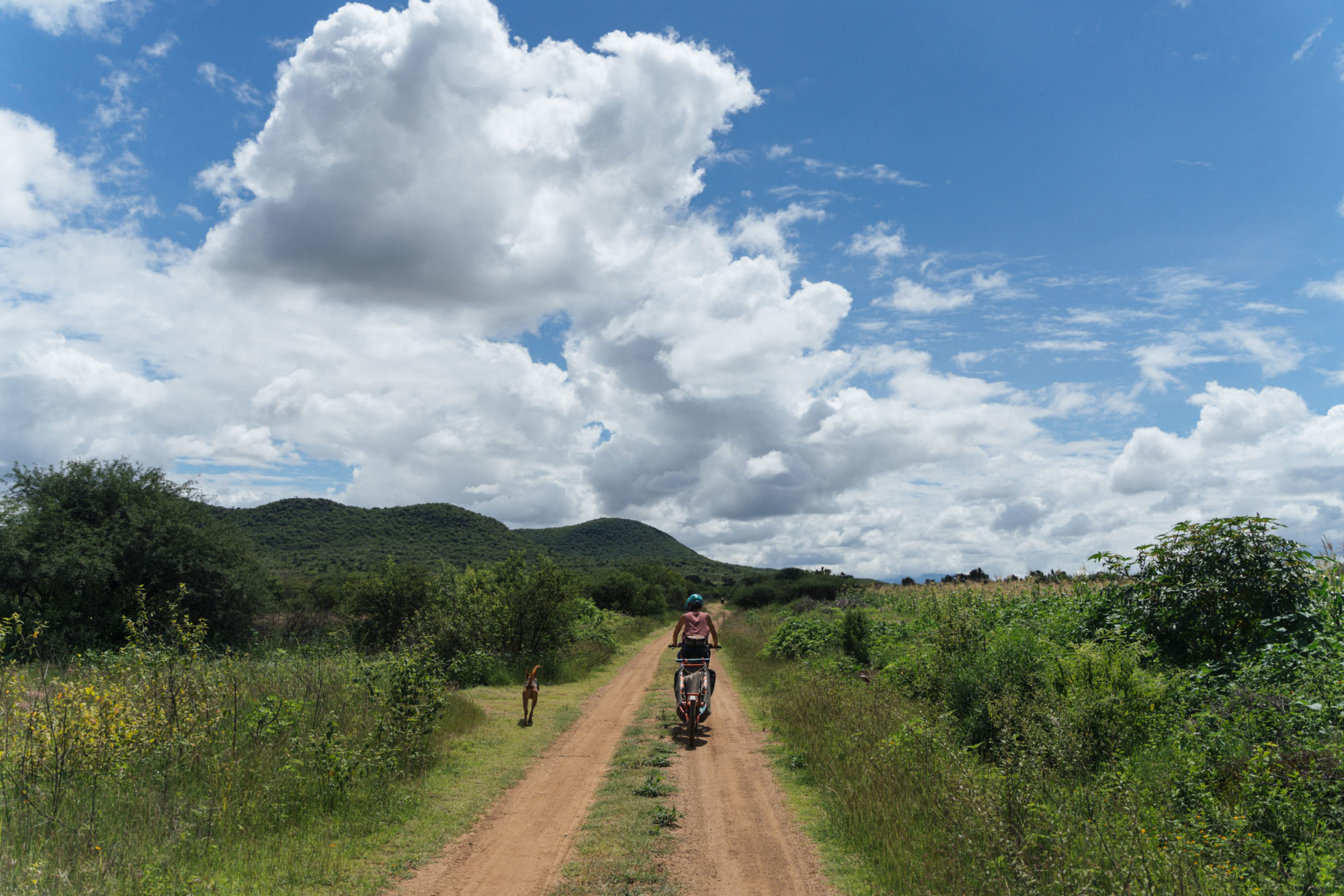
This said, I appreciate that the notion of e-bikepacking might be a step too far from the human-powered essence of bicycle touring for some, and a slippery slope to who knows where for others. From a personal perspective, I also know that the time I spend bikepacking is my escape from the complexities of external engines and the complications they bring – I value the sense of self-sufficiency on both a physical and emotional level, even if I’m pedalling a mechanical device. Beyond the need to resupply for food and water, I’d miss the ad hoc nature of riding as far as my legs can carry me, then scouting out the perfect campsite for the night, away from the trappings of plugs and lights and cars. But I won’t try and tell you what’s best for you and your particular circumstances, because I also recognise that electric assist has the wonderful potential to make bike touring more inclusive for so many. After all, if it wasn’t for e-bikes, there’s no way I could have enjoyed the trip I shared with my son and my mum a few years ago, where we cycled and camped out for three days together.
Indeed, the overall experience of riding out and back to Hierve wasn’t significantly different than the one we’d have enjoyed without any pedal assist at all. We still had a great time, we still took time to appreciate the natural world around us without blowing past it all as you might in a car, and we didn’t come home feeling like we’d cheated the system. Yes, I suffered from some battery anxiety, but before I knew what my body was capable of, I suffered from food anxiety too… Simply put, while bikepacking on an e-bike brings certain constraints and different logistical challenges, there’s still a whole lot to like.
And while I certainly don’t need an e-bike to enjoy a bikepacking trip like this, I’m excited by how it might open up such an experience to a wider cross-section of people. After all, it’s far more immersive than embarking on the same trip in a vehicle, which in this case, is what almost everyone does on a daily basis. My own preference for e-biking may be predominantly city-based, but I’m increasingly open to riding them elsewhere too. In fact, I’m now dreaming of a world with fewer cars and more e-bikes!
Related Content
Make sure to dig into these related articles for more info...
Please keep the conversation civil, constructive, and inclusive, or your comment will be removed.







